At the beginning of 2023, Jake Braver explained the visual effects work on The Pale Blue Eye. Now he’s back with a new Netflix film, Nyad, and some very different challenges.
How did you get involved in this project?
I was finishing up another movie for Netflix and they asked if I was interested in reading the script and meeting with the directors. I said yes right away, as I’m a big fan of Chai and Jimmy’s nonfiction work. We had a long first meeting and got on very well.
How would you describe the collaboration between yourself and directors Jimmy Chin and Elizabeth Chai Vasarhelyi?
I loved collaborating with Chai and Jimmy. Jimmy & Chai spoke a lot about how the water needed to be the third character, that it was both Diana’s companion and greatest challenge. As this was Chai and Jimmy’s first narrative movie, they had very little VFX experience, but trusted in what the scope of the VFX work needed to be for the story. I always started with real world reference to begin any creative conversation.
I’ll also say its impossible to talk about creating with the directors without talking about Editor, Chris Tellefsen. I would say this project required more than the usual commutations & collaboration between editorial and VFX and Chris was a great partner and collaborator.
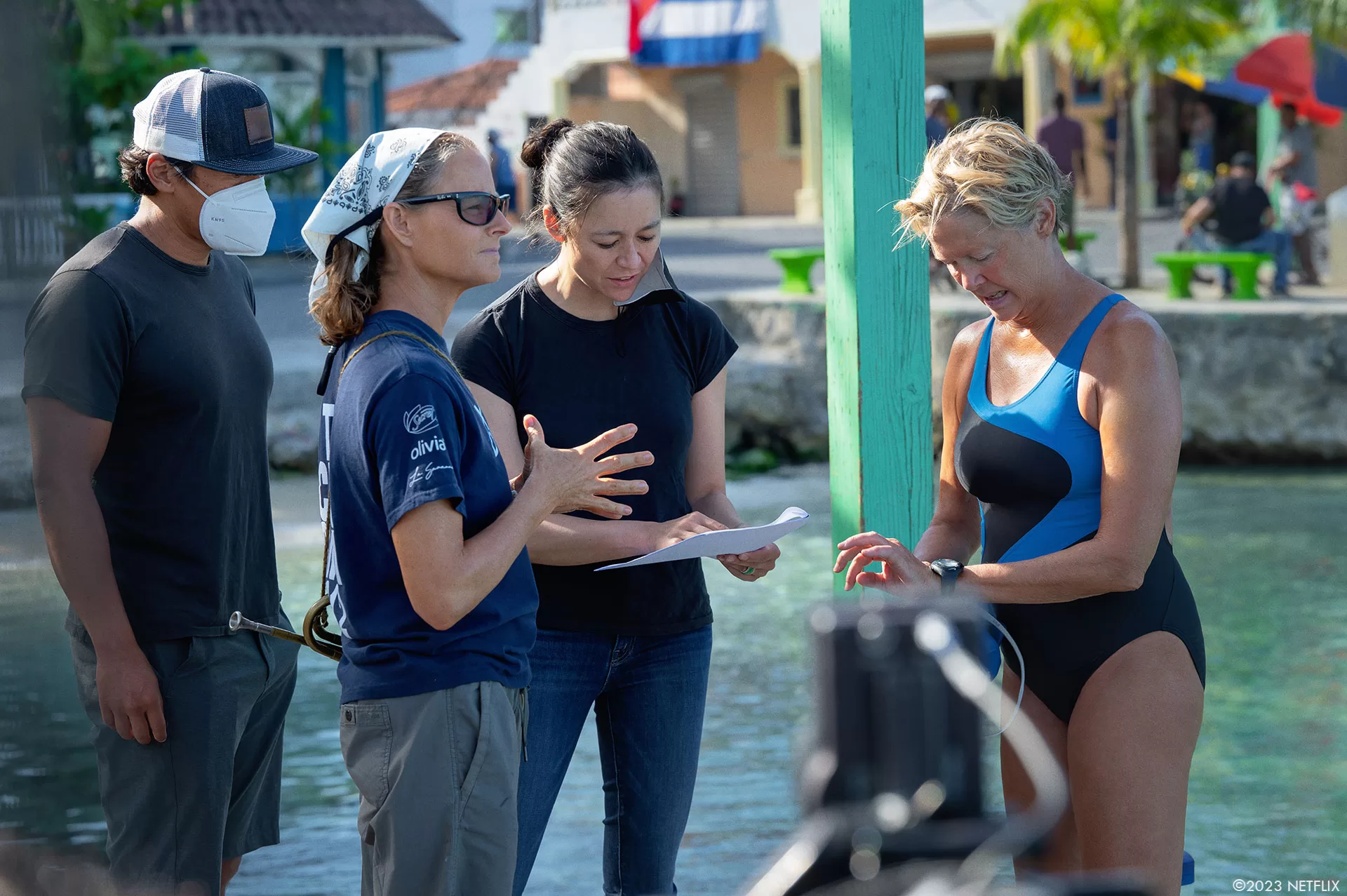
How did you organize the work for the VFX Producer on the film?
Julia Frey started with me, broke things down and took care of initial awards, but when the schedule extended she had to step away for a prior commitment so Fiona Campbell Westgate came on right as things started really started getting going.
Anyway we cut it, we knew there would be a lot of shared assets and shots between vendors. The scope of simulation was massive for a movie of this size, so we kept an eye on workload for each water vendor (Weta FX, DNEG, and Scanline VFX) and had great vendors like RISE, Phosphene FX, and Folks VFX take on the heaviest non-water work.
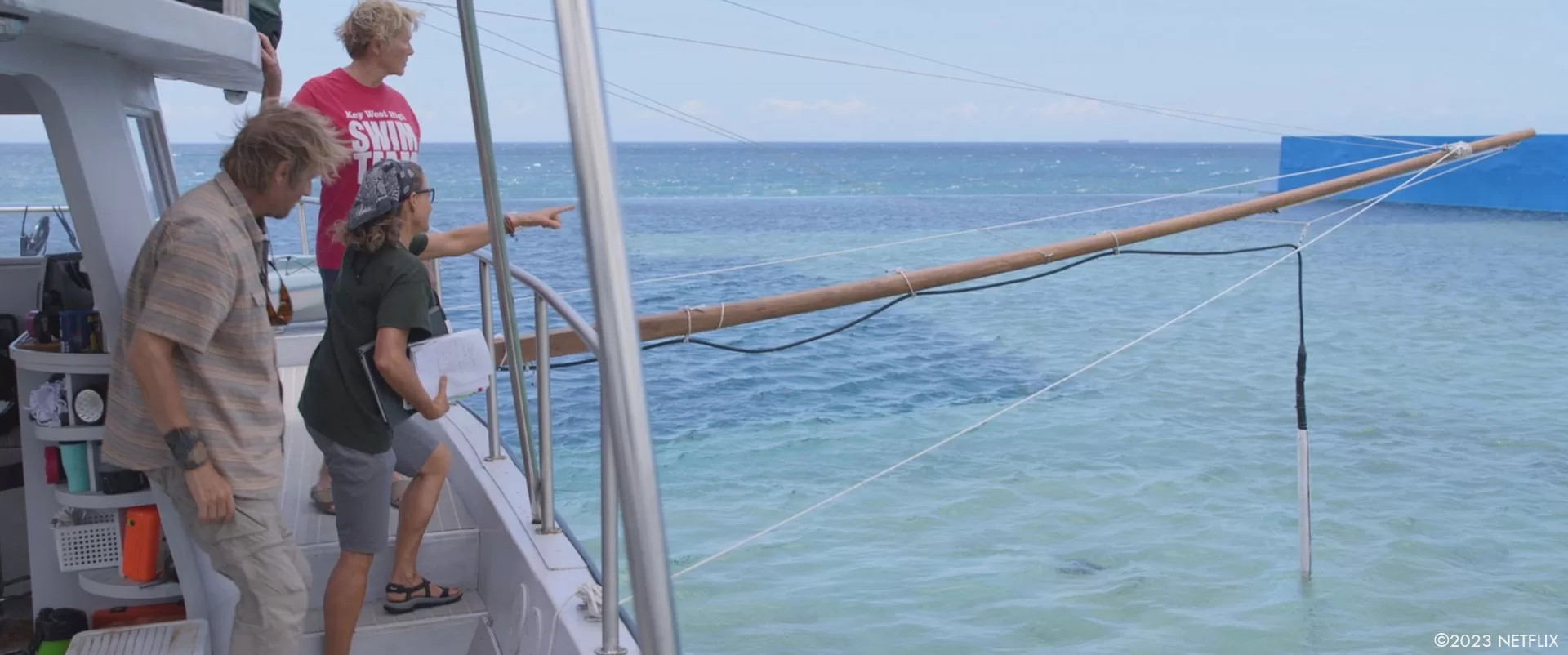
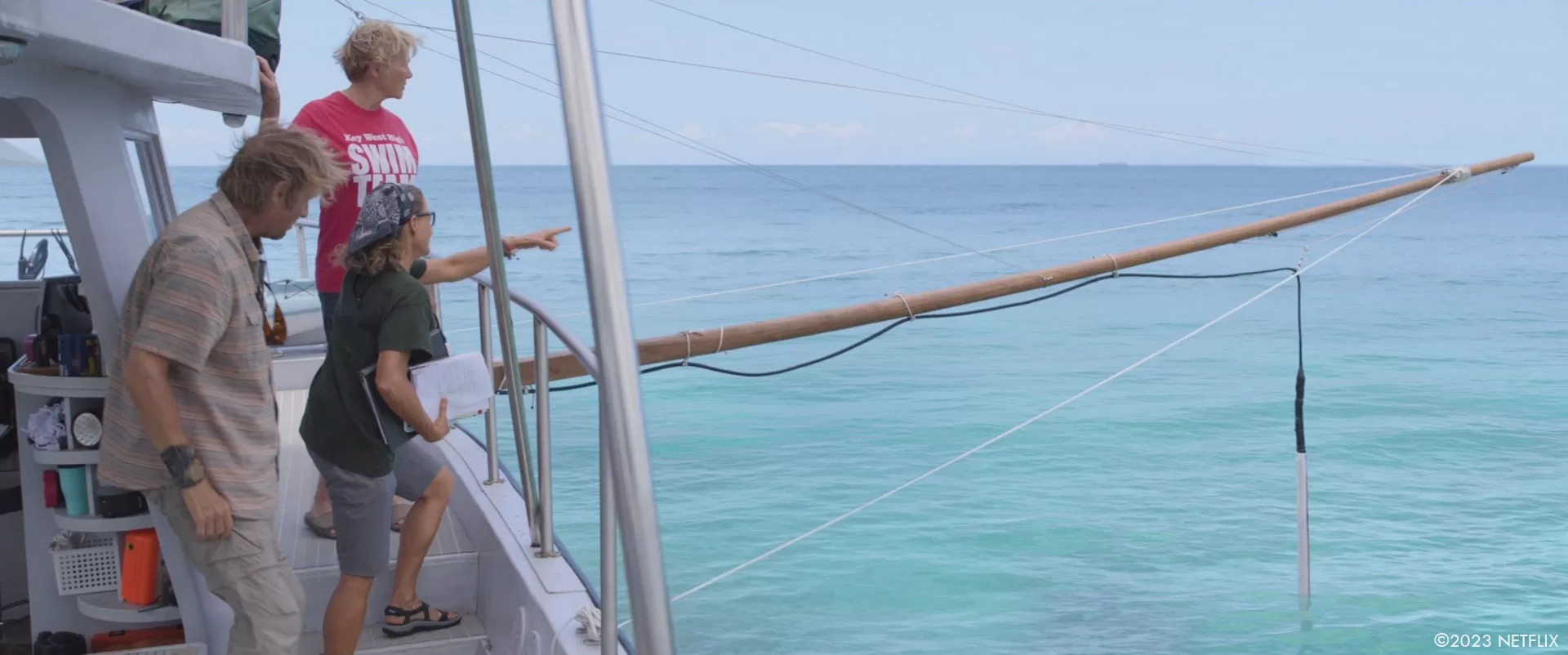
How did your position as Second Unit Director help you with the VFX work, if at all?
I think both roles inform each other. Both require getting into the directors’ heads, understanding their creative intent, and then building on that, be it in the CG world or the real world. Trust built with the filmmaking team on the VFX side always translates well to 2nd Unit work and vice versa.
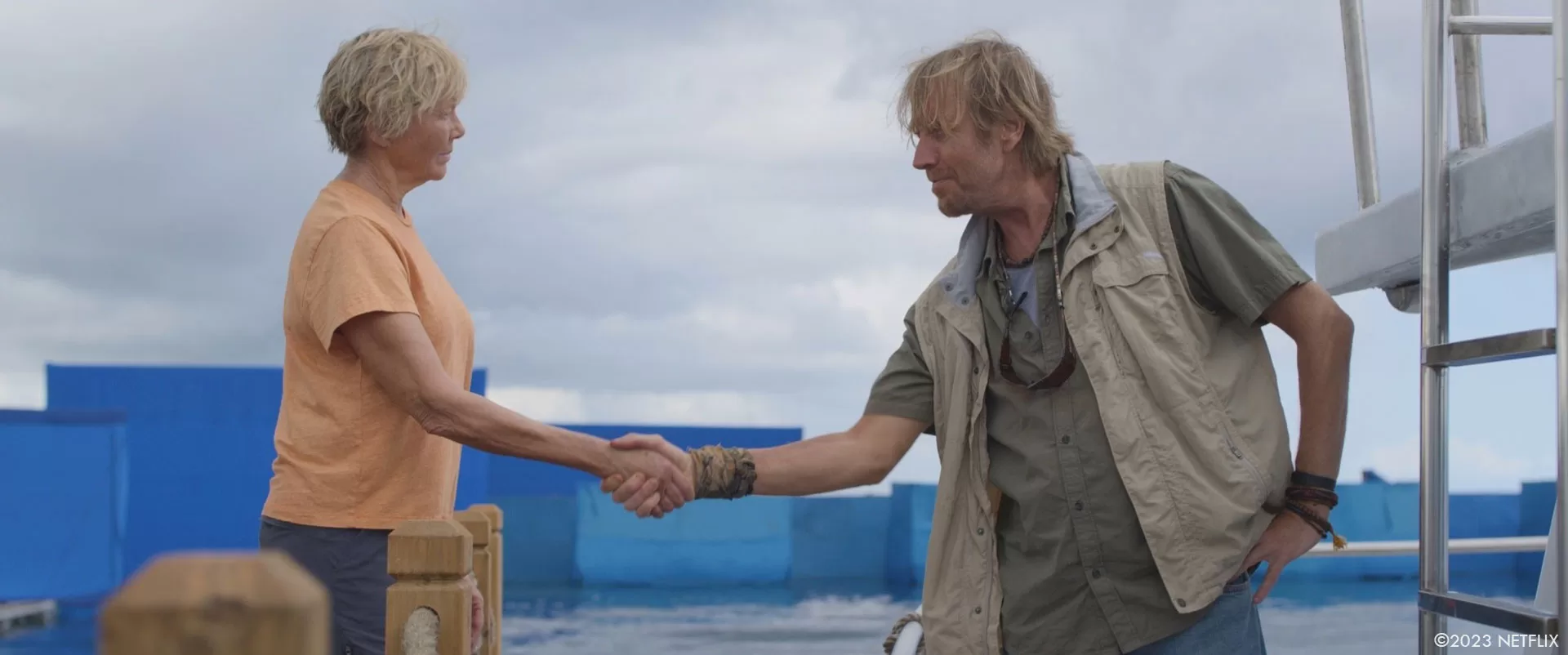
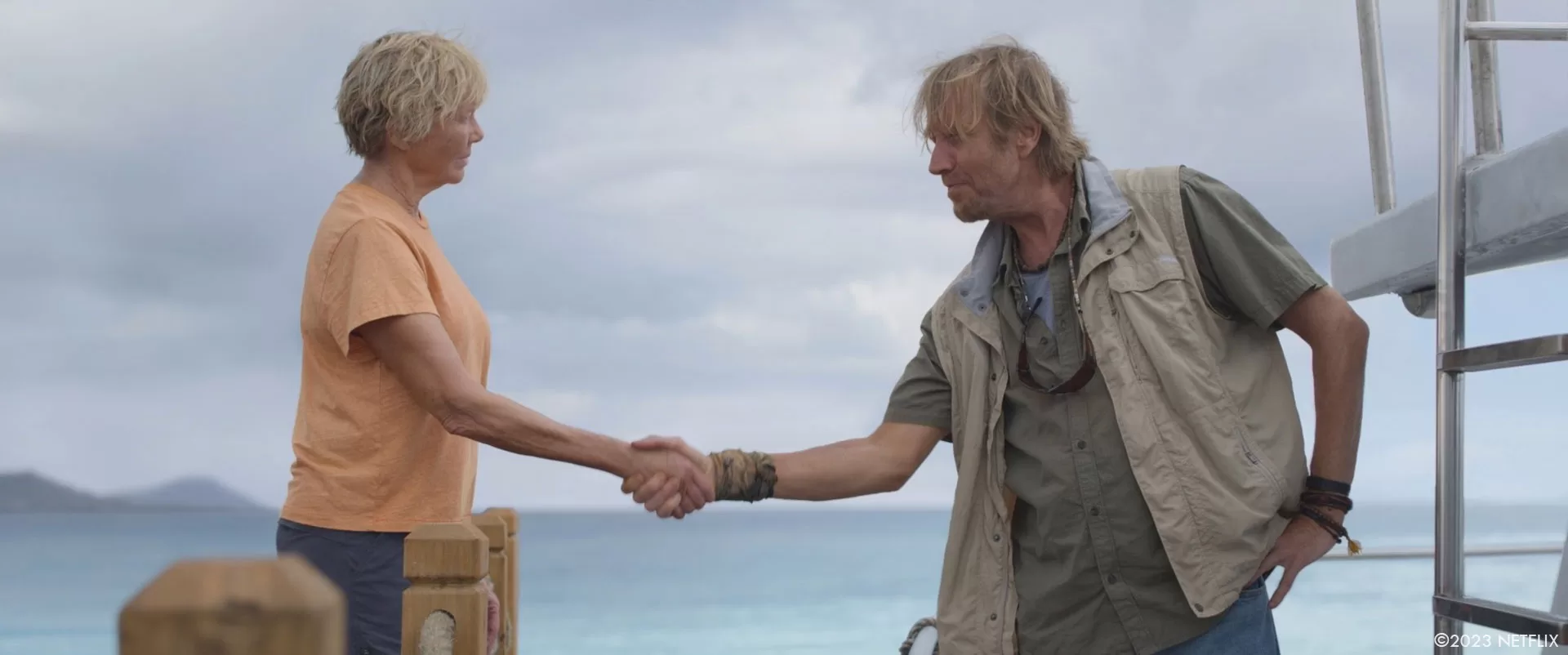
How did you choose and split the work amongst the vendors involved in the project?
These days it really comes down to capacity. Luckily, the stars aligned with DNEG, Scanline, and Weta FX. Our other vendors were also vendors Fiona or I had worked with before and were lucky to have onboard.
DNEG: The first two swim attempts in the movie, including the falling stars hallucination, and lots of the larger asset builds. In DNEG’s swims the water was going against Diana and had to turn on Diana and push her around quite a bit.
Weta FX: Diana’s long final swim attempt when the current of the ocean was with her, including all the sharks, and lead up to the beach in Key West.
Scanline: The Storm, Diana’s training swims, Taj Mahal hallucination, and Diana’s arrival in Key West.
RISE: Both of the long scenes on the dock in St Maarten and some other assorted shots
Phosphene: All the driving comps, L.A. set extensions, and some additional comp work.
Lola VFX: Enhanced Diana’s swollenness and her jellyfish stings, and a special scene, where we deaged Annette and replaced Diana watching herself with Annette’s face and performance.
Folks VFX: Lots of assorted comp work, some graphics, and some cleanup work.
Cadence Effects: Had this large, fiddly, and daunting task of not only designing the flashback look and archival looks, but implementing them on over 17 different source formats from 3/4 inch tape to MiniDV and GoPro, they also helped with some of the graphics builds.
Studio 8: Cleanup work.
Proof: Handled all our visualization needs.
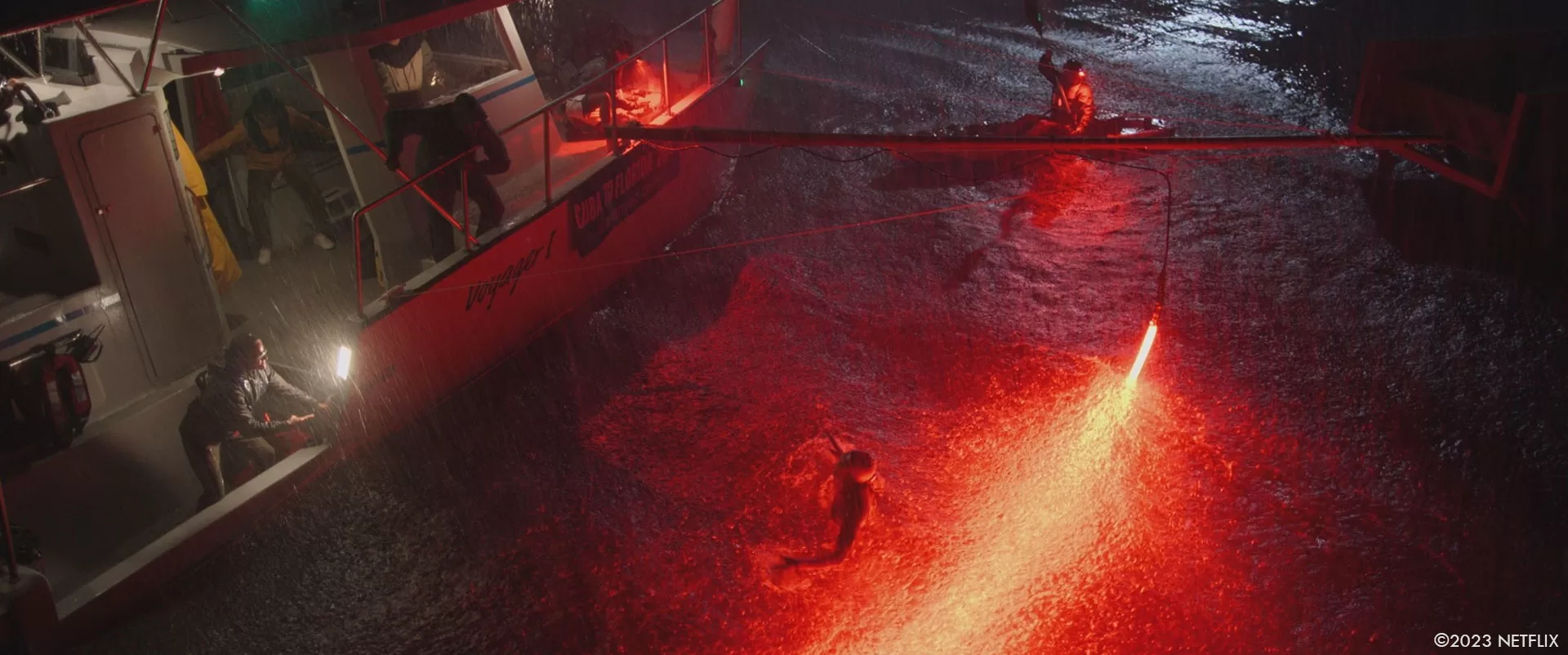
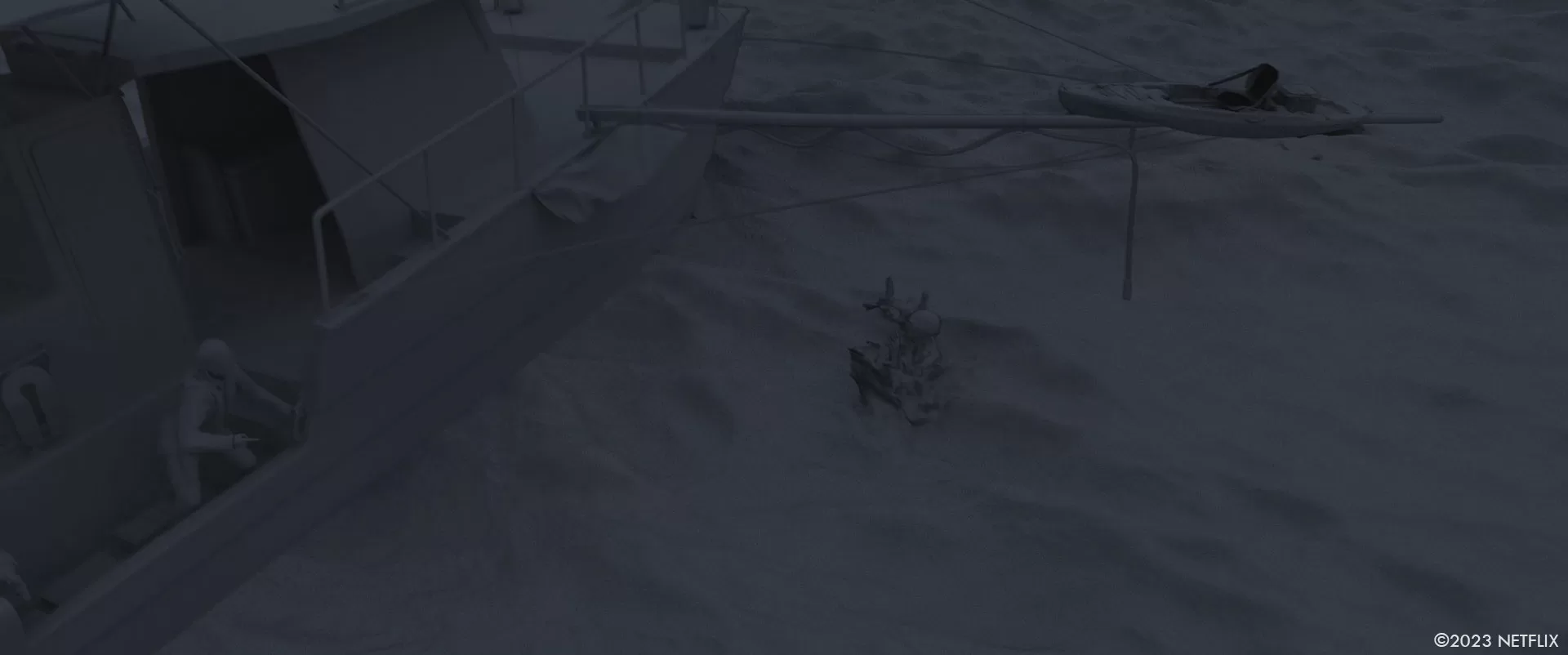
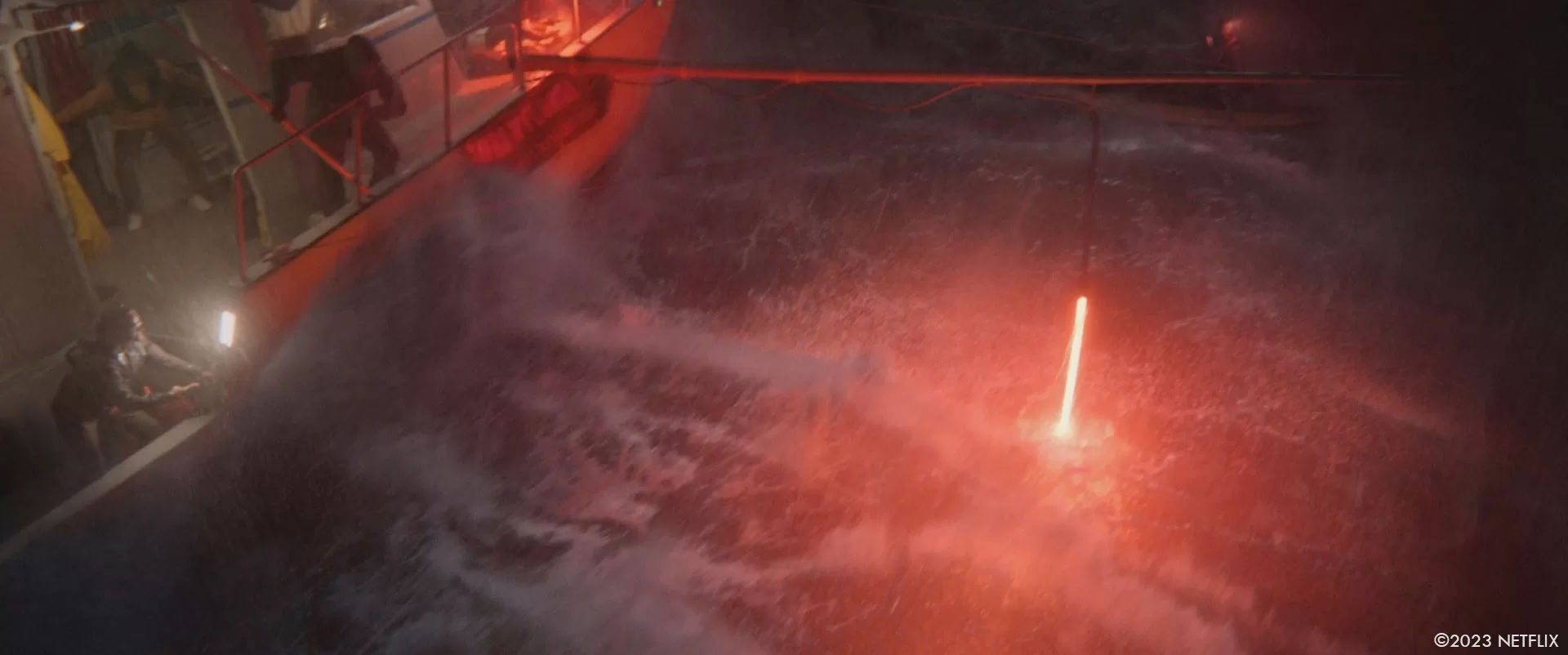
Can you describe what it was like to shoot on water?
Not really! Most all the water work, except for some of the drone shots, was shot in the tank at Pinewood in the Dominican Republic. That isn’t to say the tank didn’t have its challenges, it did, but it would have been nearly impossible to make this movie in the open ocean. Shooting in the controlled environment of the tank allowed Annette to be in the water swimming for most of the shooting day in a way that just would never have been possible in the ocean.
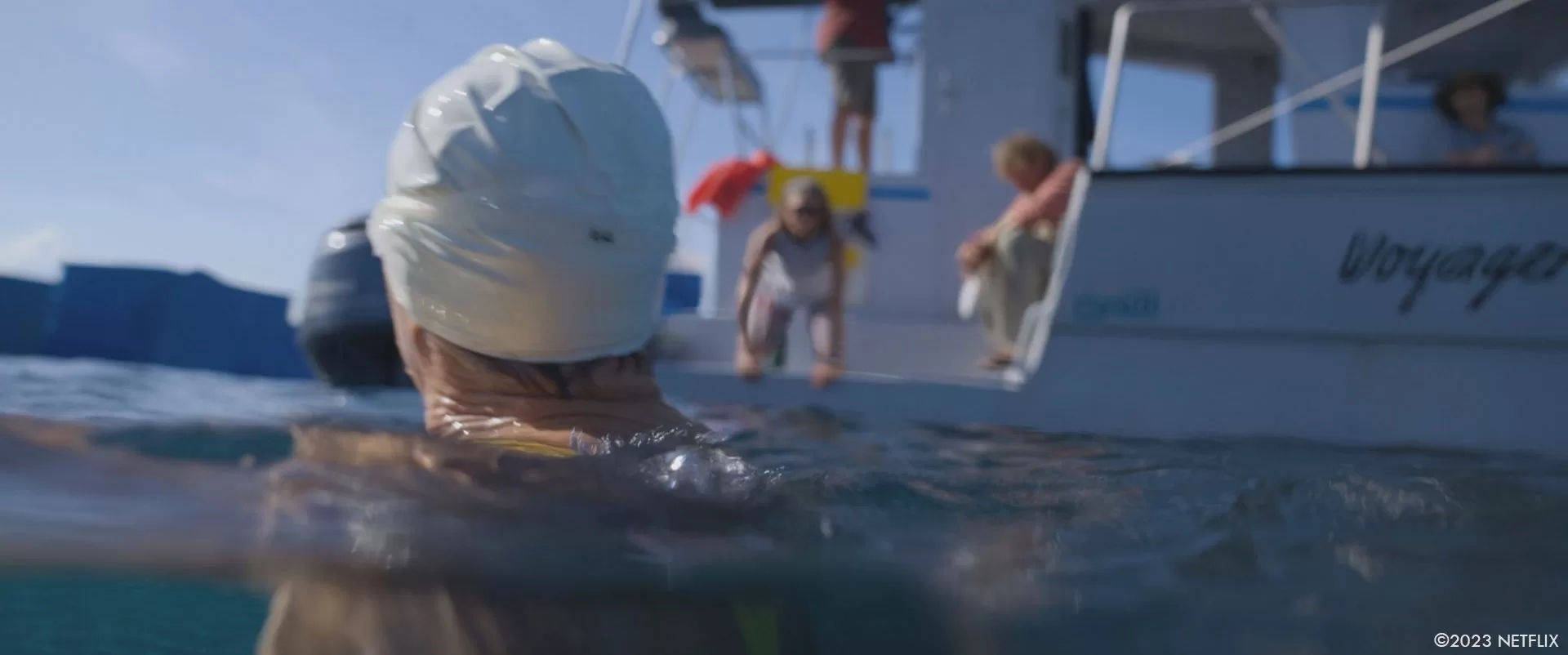
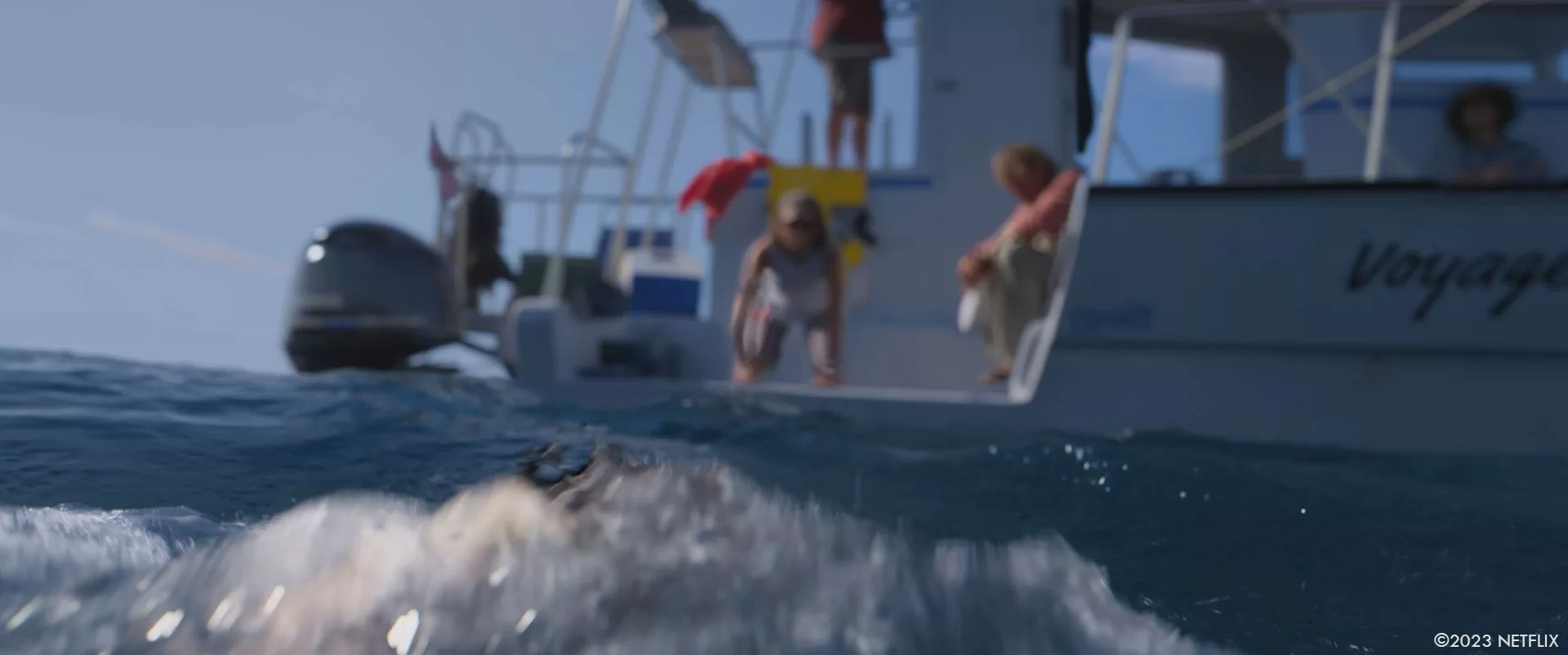
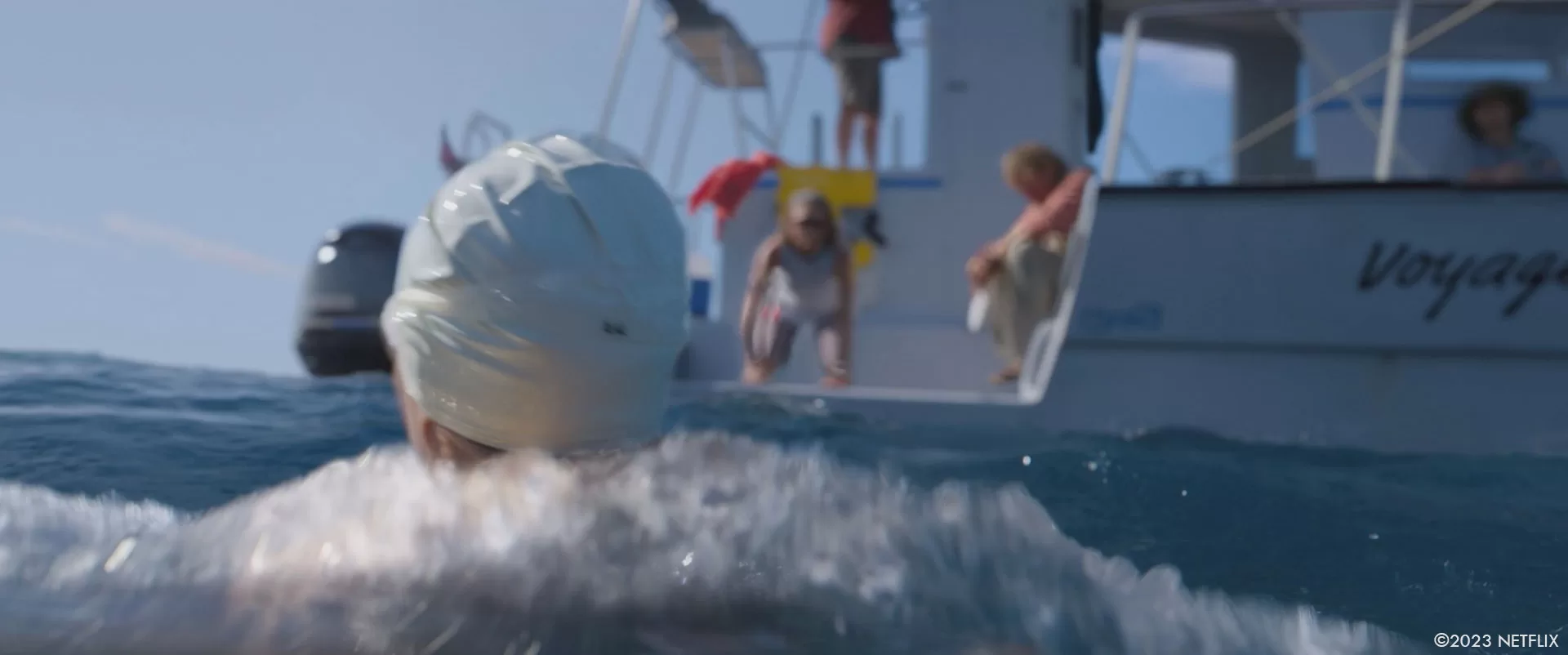
Can you elaborate on the VFX work in the water sequences?
The biggest thing VFX had to bring to the movie was getting it out of the tank and into the ocean. In real life, Diana faced punishing currents and the ocean was a pretty brutal place. None of that danger could exist in the plate photography for obvious safety reasons, so 98% of the water around Diana is replaced in virtually every shot of the ocean. The goal was to bring life to the tank so it looked like like the open water.
During production there wasn’t a helpful liner or wave machine in the tank to make meaningful waves. The boat wasn’t on a gimbal, and Annette had to act like she was being pushed around by the current— that meant her performance wasn’t just about dialogue, it was a really physical performance that she trained a long time for. Our job was to make the water seamlessly match it.
The story necessitated that the current of the ocean move both against and with Diana at varying intensities.
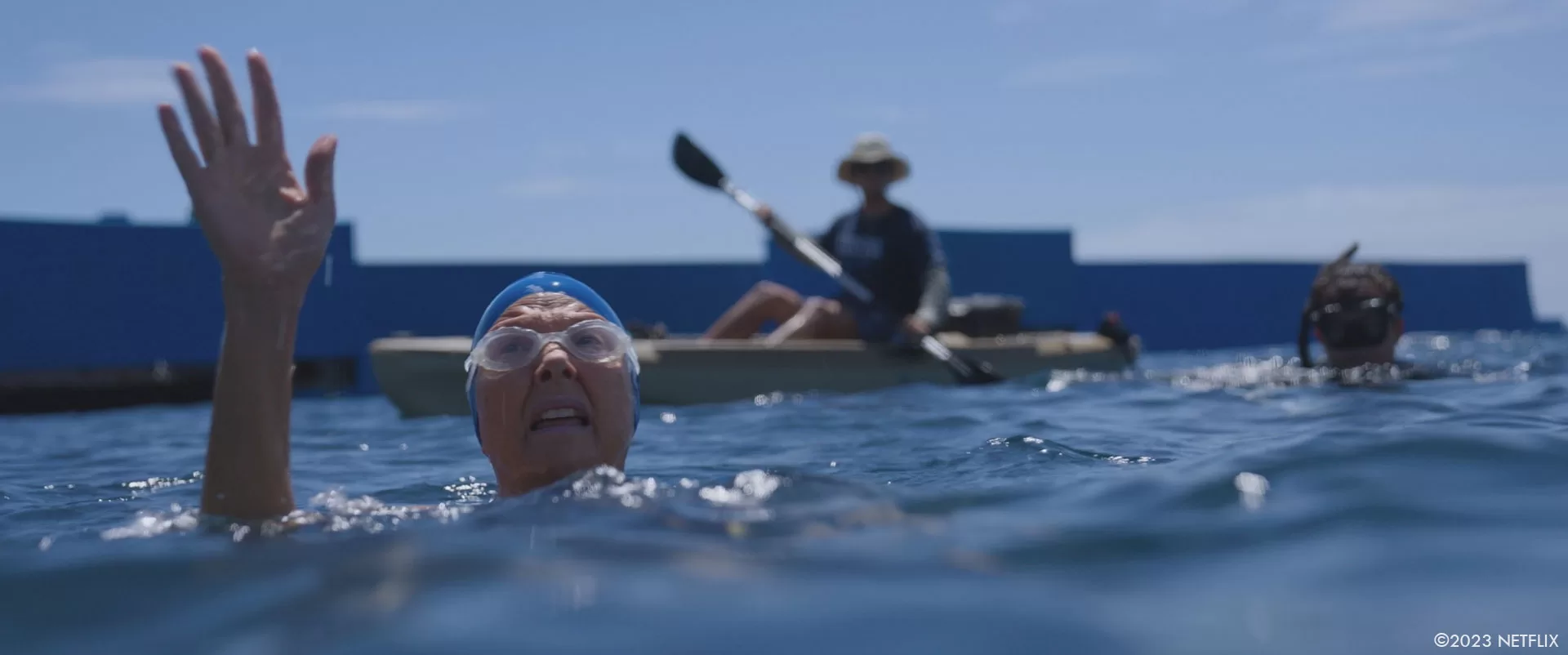
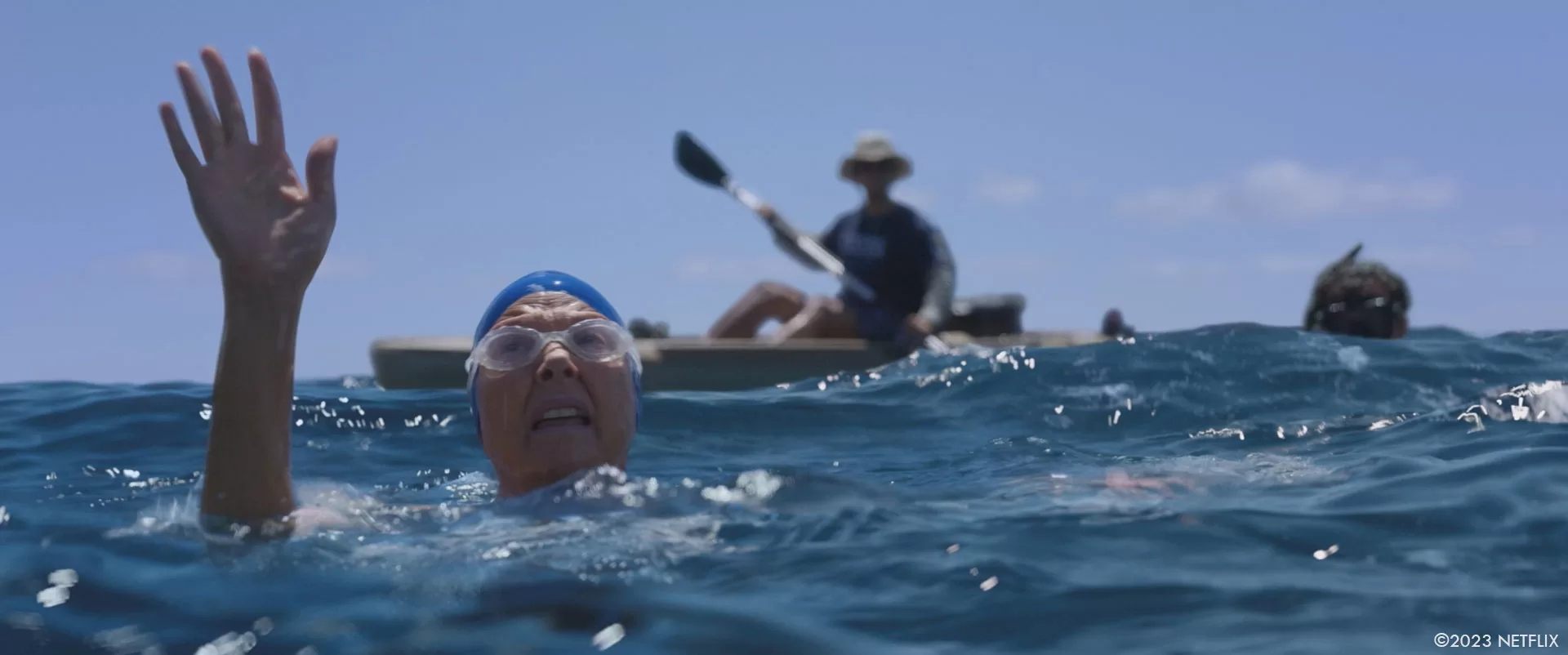
What were the main challenges of working with water?
Water shows are hard. They’ve gotten easier, but there are still so many challenges from the practical—long renders and rerunning simulations, to technical— the intense amount of close up interaction with actor performance and the progressive nature of certain simulations.
We put several hundred shots through layout with 4 different fully rendered ocean variants in a systematic and controllable manner. We could then pick what worked for the story and Diana’s performance in the tank on a shot by shot basis.
There are lots of movies that have CG water and tank extensions, but we really couldn’t find another film with the conundrum of someone next to a boat and in the water who couldn’t be replaced. Everything had to be built around Annette’s performance and had to be photorealistic.
I was really lucky to have a cadre of supervisors who were water show veterans in Mohsen Mousavi (DNEG) Chris White (Weta FX) and Dann Tarmy (Scanline). Each vendor had their own pipelines and processes, the only thing we really unified was the way all the elements were presented to the directors.
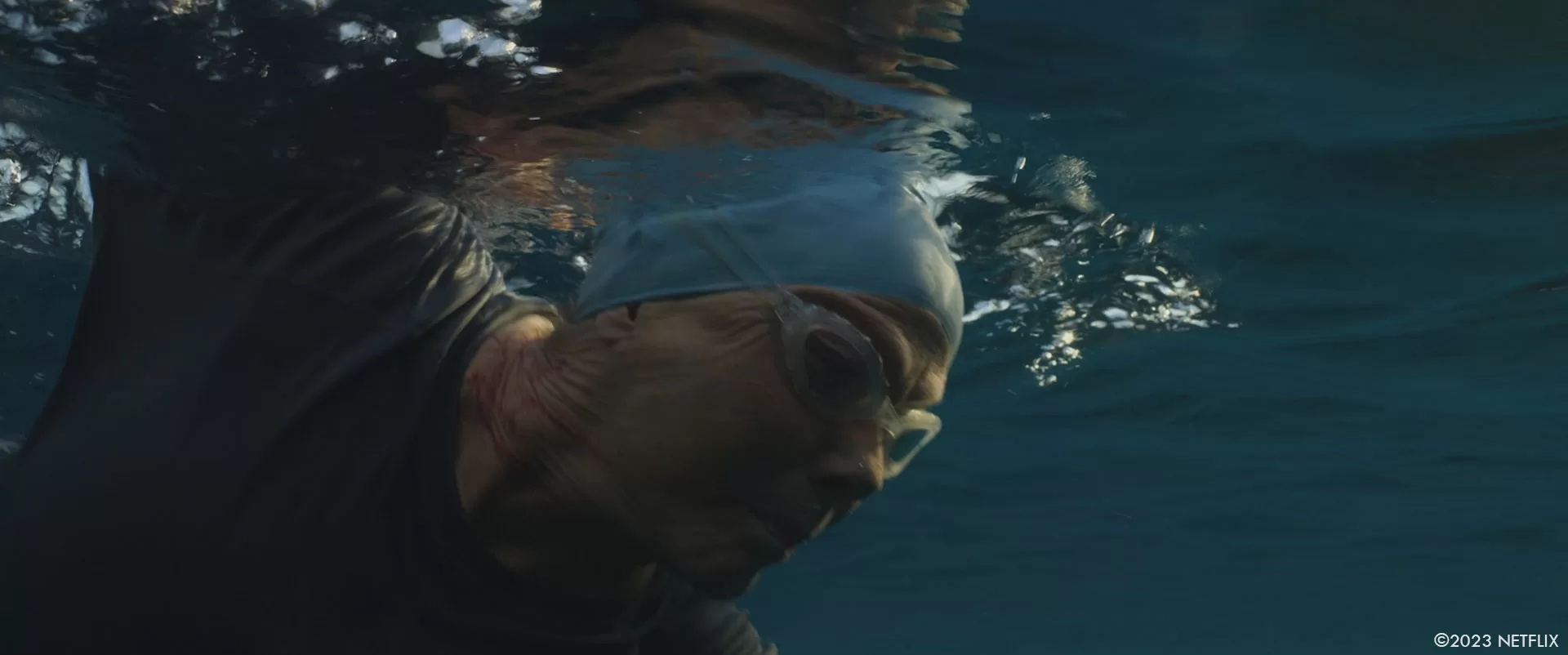
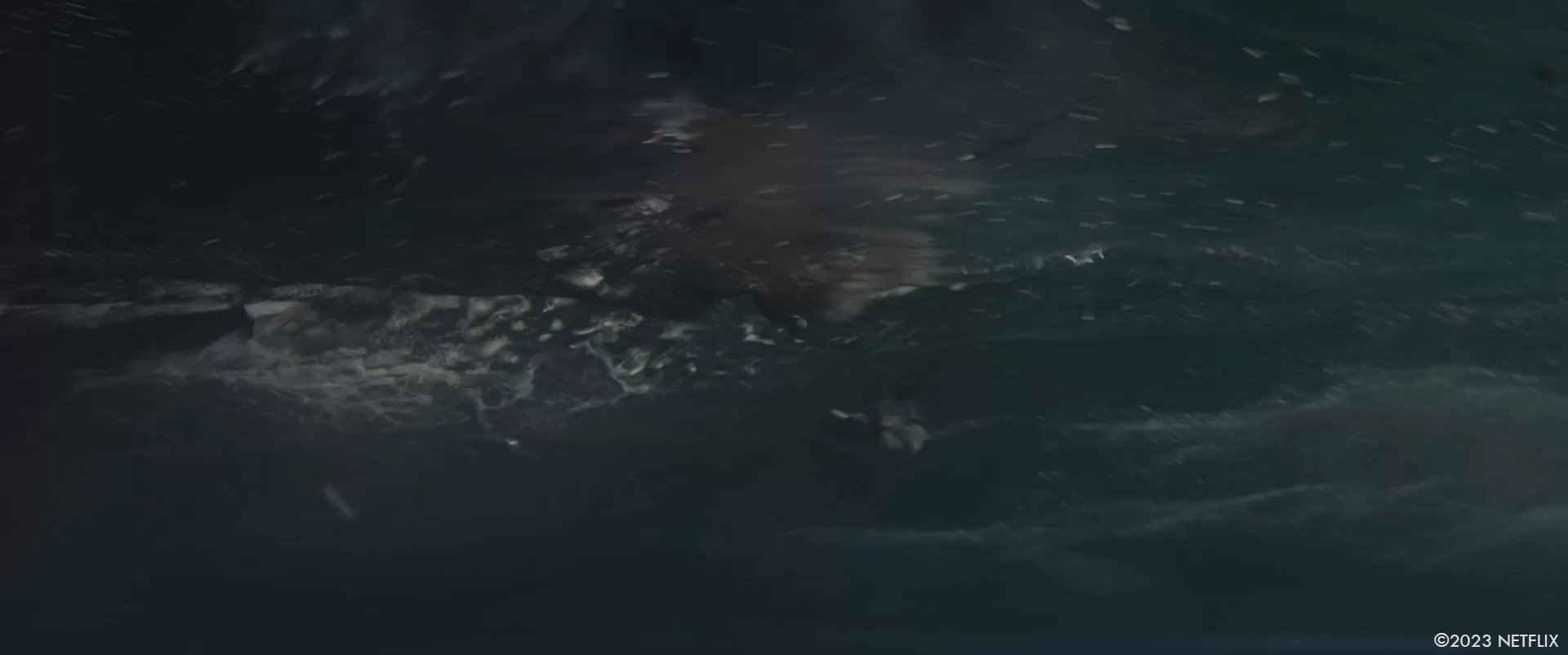
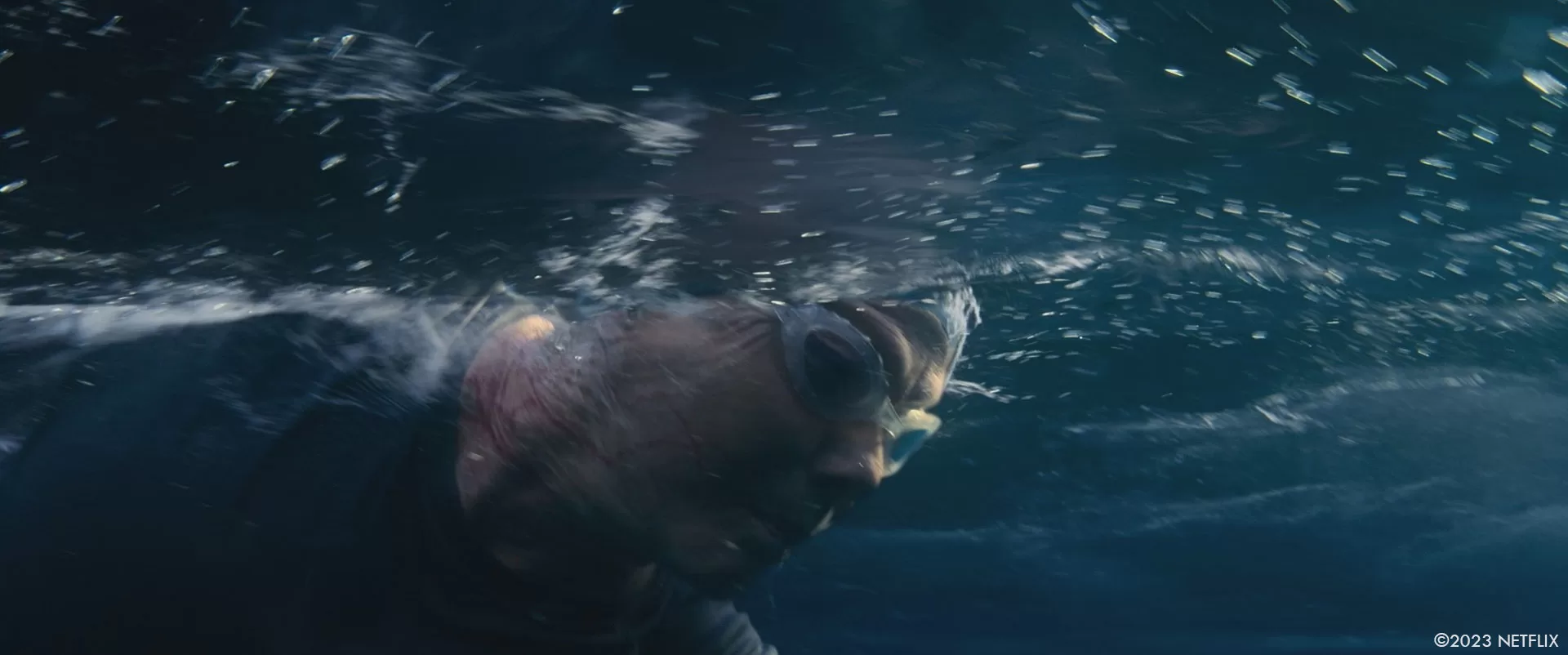
How did you handle the impressive storm sequence?
Scanline’s Dann Tarmy and I looked at lots of references and found two that really spoke to the conceptual ideas. Our goal was for it always to be crazy, but believable that Diana was swimming through the storm.
There was an initial phase where we really had to test what would work with the plates. I remember the first time I showed the test to the directors, they were pretty gobsmacked. We ended up pulling back from that a bit in terms of intensity because not even Diana could have weathered that storm.
Scanline really broke down the storm into a. Full cg shots b. Underwater and 50/50 shots c. Above water d. Shots on the boat. We saw versions of key shots for each of those shot types pretty early on and that was really helpful to make sure the sense of danger matched among them all.
Some of the film is set at night. How did the nighttime setting of these scenes affect your work?
Claudio Miranda and I always wanted the boat to be the brightest thing in the ocean. We really wanted to play things naturally; the lights on the boat, the red LED lane, and the moon as the only sources of light. Even in the HDR grade we made sure the sky never got too bright at night.
I think the largest night time challenge was making transparent jellyfish visible. We ended up leaning quite heavily on the red light from the lane, and increased their surface area in the animation so they just had more surface area to bounce light around.
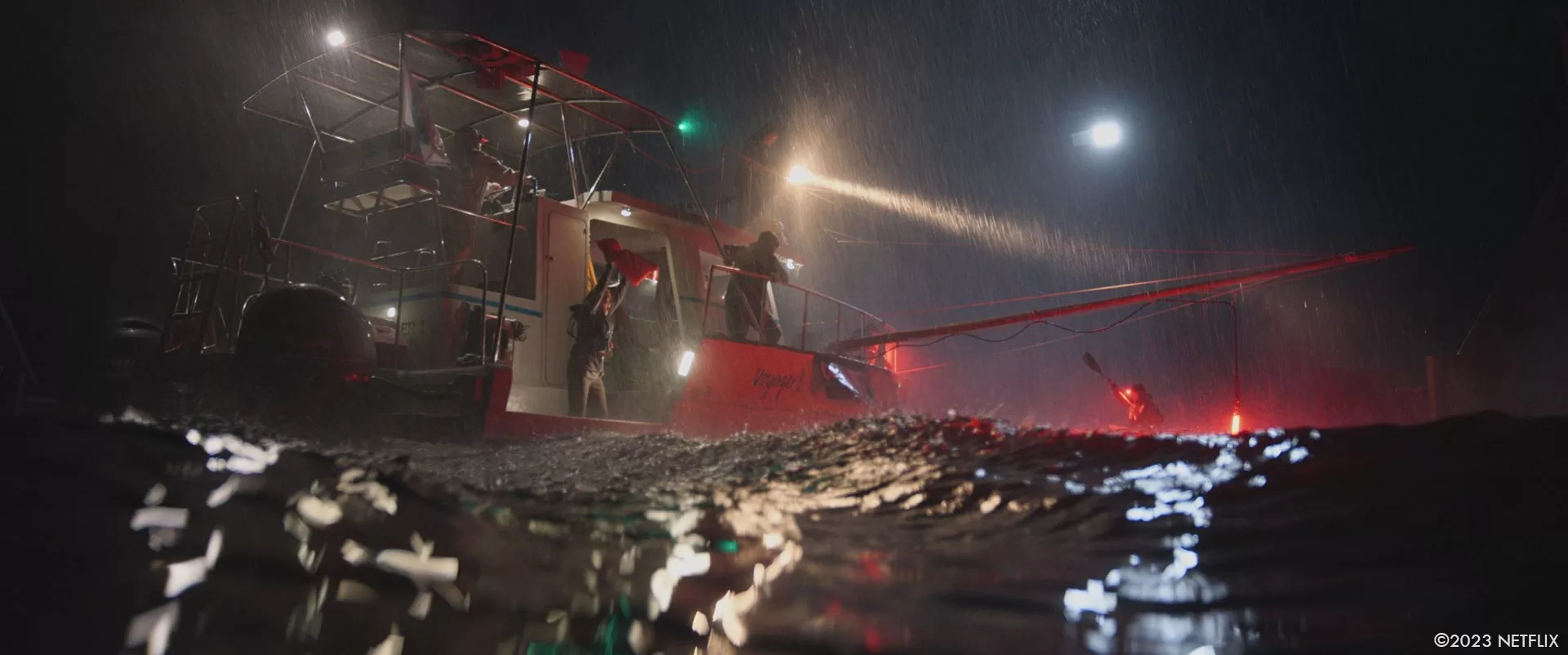
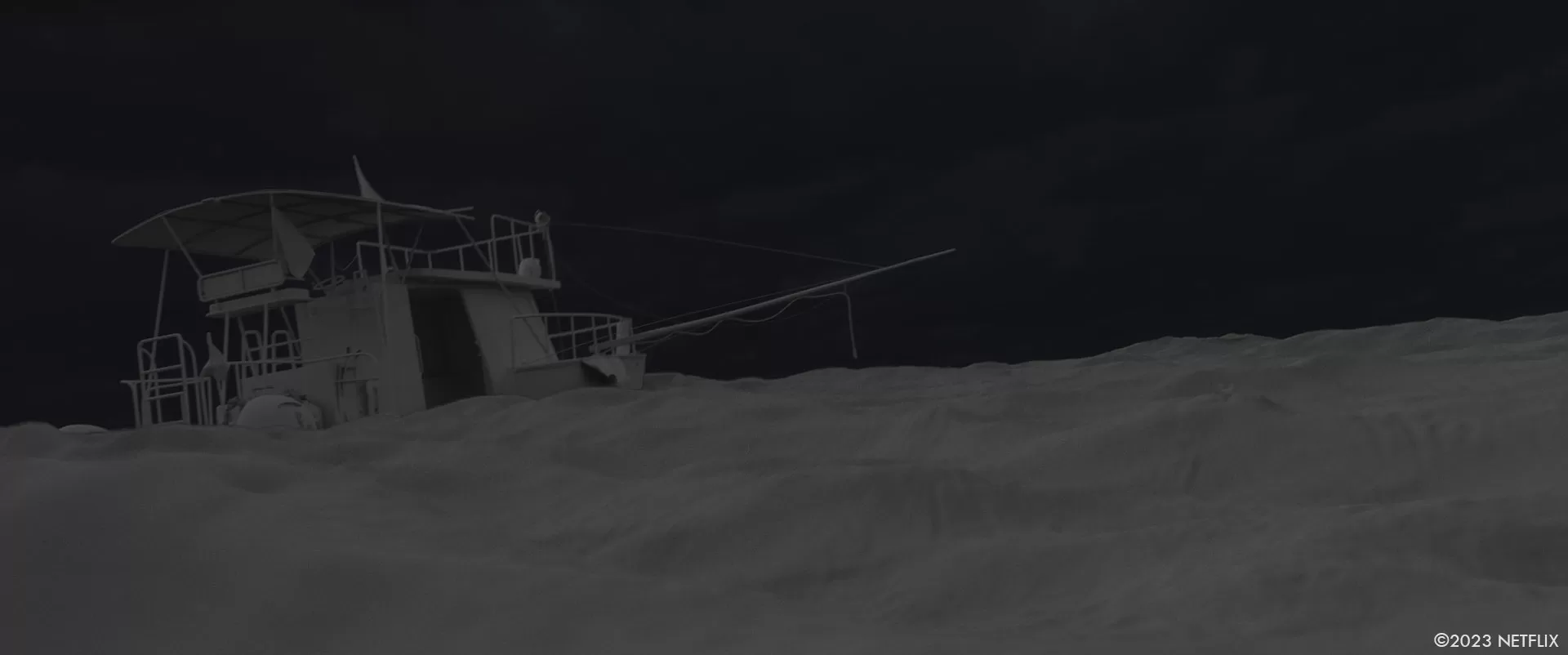
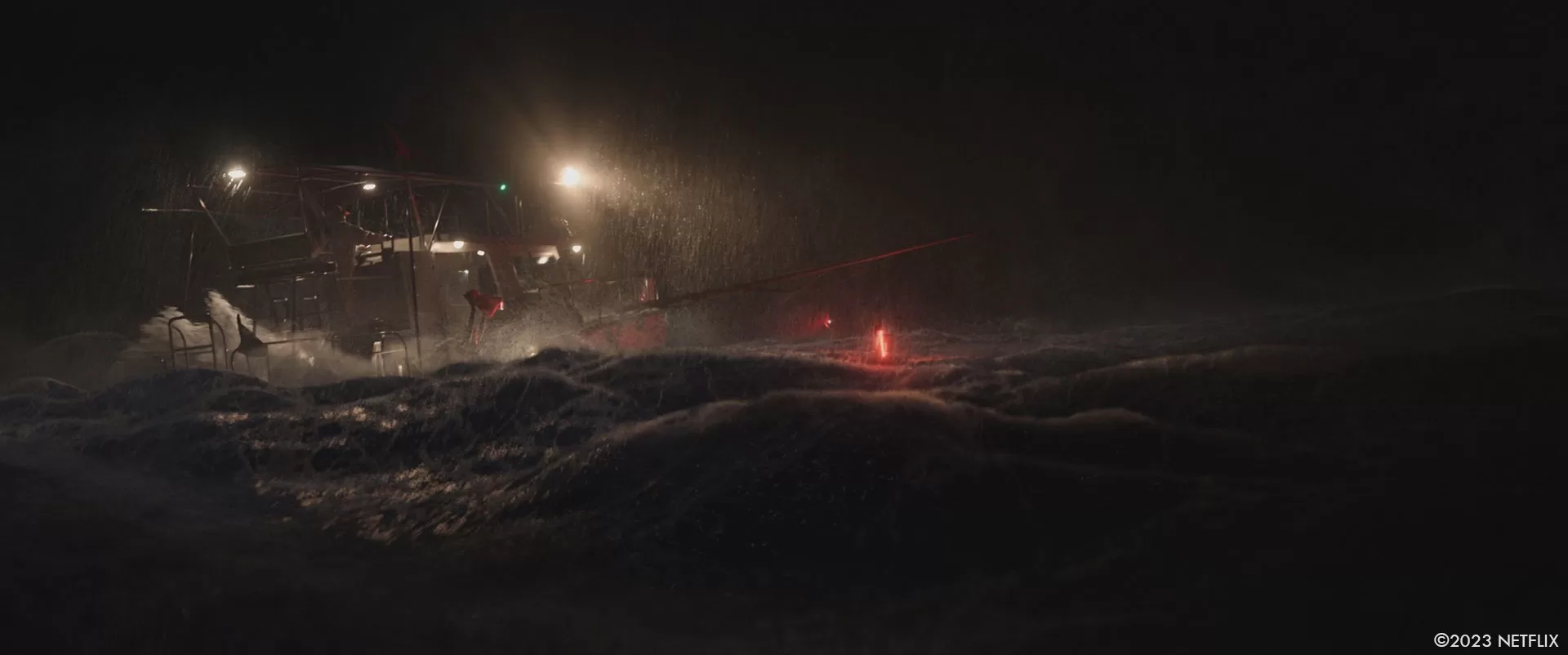
Can you provide details about your work on the sharks in the film?
We started with National Geographic reference, as Chai and Jimmy wanted to stay close to real shark behavior. Chris White and I discussed that the sharks purpose was really about the scariness of the open ocean, and emotion was our primary goal. Lots of movies have done big shark sequences but our goal was to keep the audience with Diana’s fear and reliance on her team to help her.
Weta’s Animation Supervisor, Anneka Fris, really understood this and we tried to make the shark anim disturbingly erratic. She had some truly excellent ideas that really helped the sharks feel natural and scary.
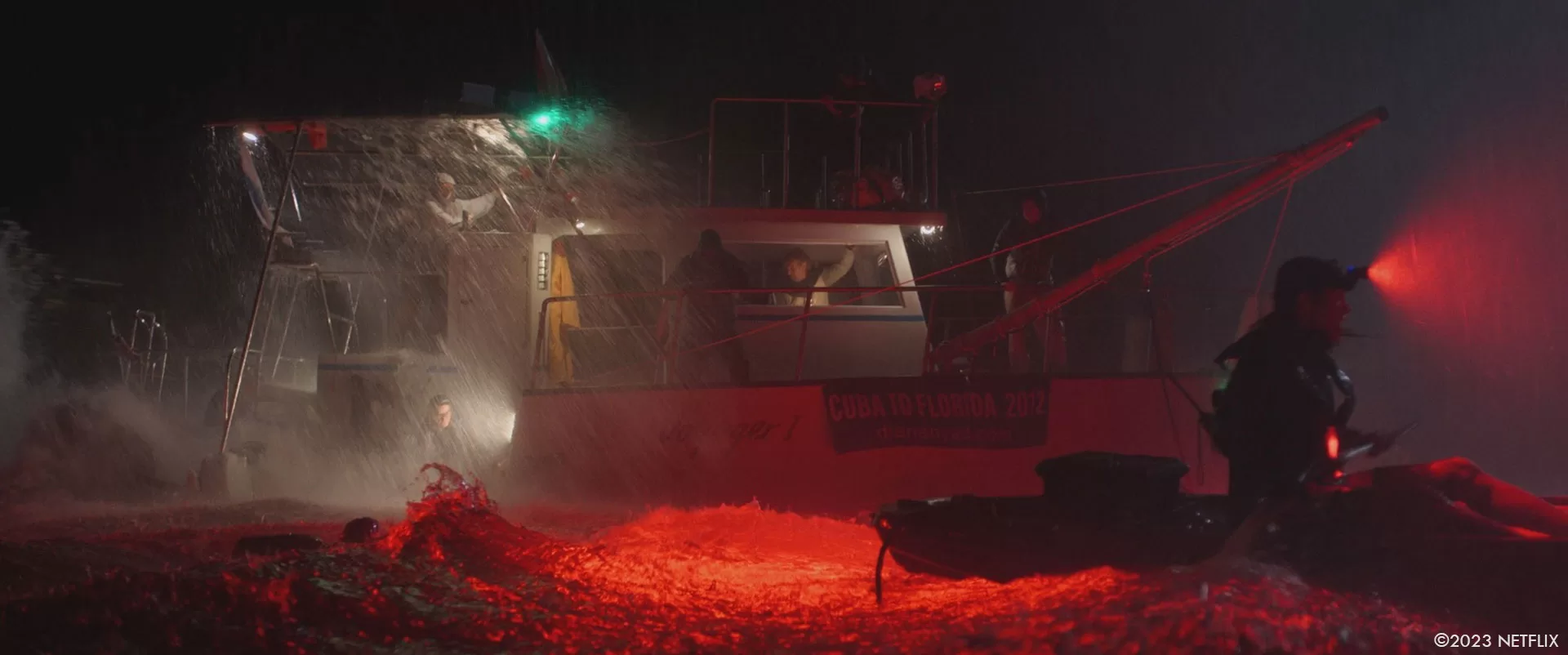
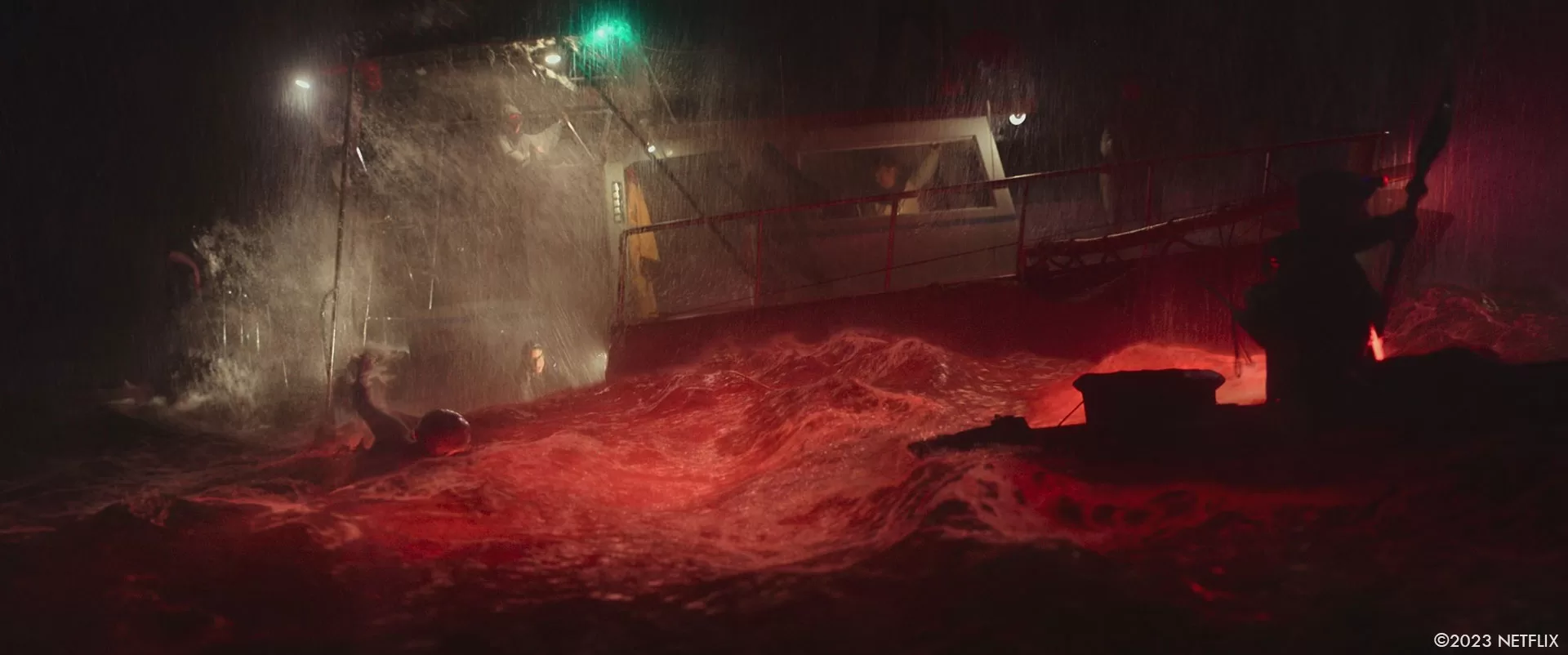
During the film, Diana experiences various hallucinations. What references did you use for these visions?
It was a very exploratory process and one of the first things I really dug into with Jimmy and Chai. We knew we wanted the hallucinations to have visual commonalties and be really arresting. DNEG’s Art Dept did the initial concepts for both hallucinations concurrently to visualization happening with Proof. We tried many ideas that didn’t work— they didn’t strike the delicate tone we were looking for . Once we started to find a color palette and a design for the shots that felt a bit trippy, we knew we were onto something.
Eventually Scanline took over the Taj Mahal, and started to figure out what scale we could build at that felt both intimate and massive all at once.
Can you elaborate on the design and creation of the beautiful lights she hallucinates?
There are only so many things could fall from the sky that fit the bill, so we looked at references of things like meteor showers, fireworks, northern lights, and arctic fog. The video that we really keyed in on was a FPV drone filming fireworks- the reference showed the hot core of the firework and the fall off of the trail and smoke. Once we had art we liked, we did some FX tests before starting to block the shots.
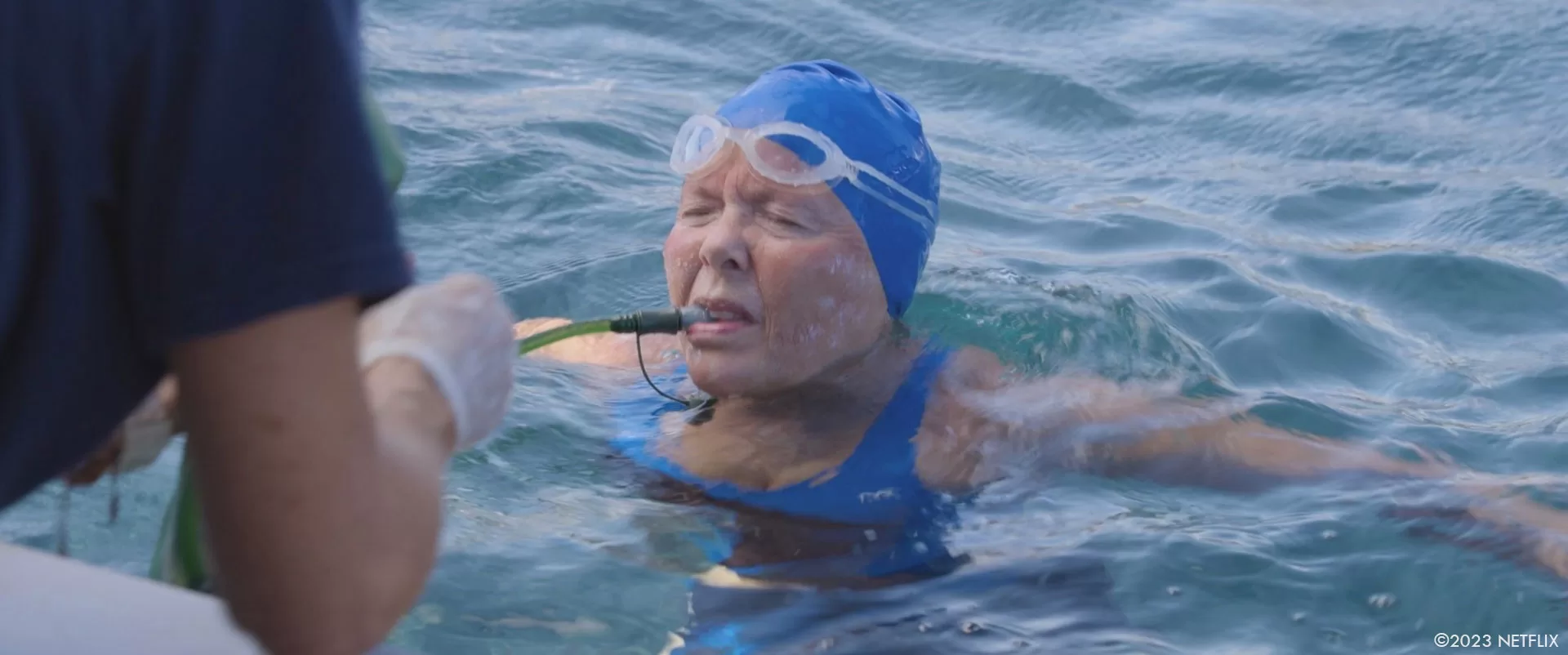
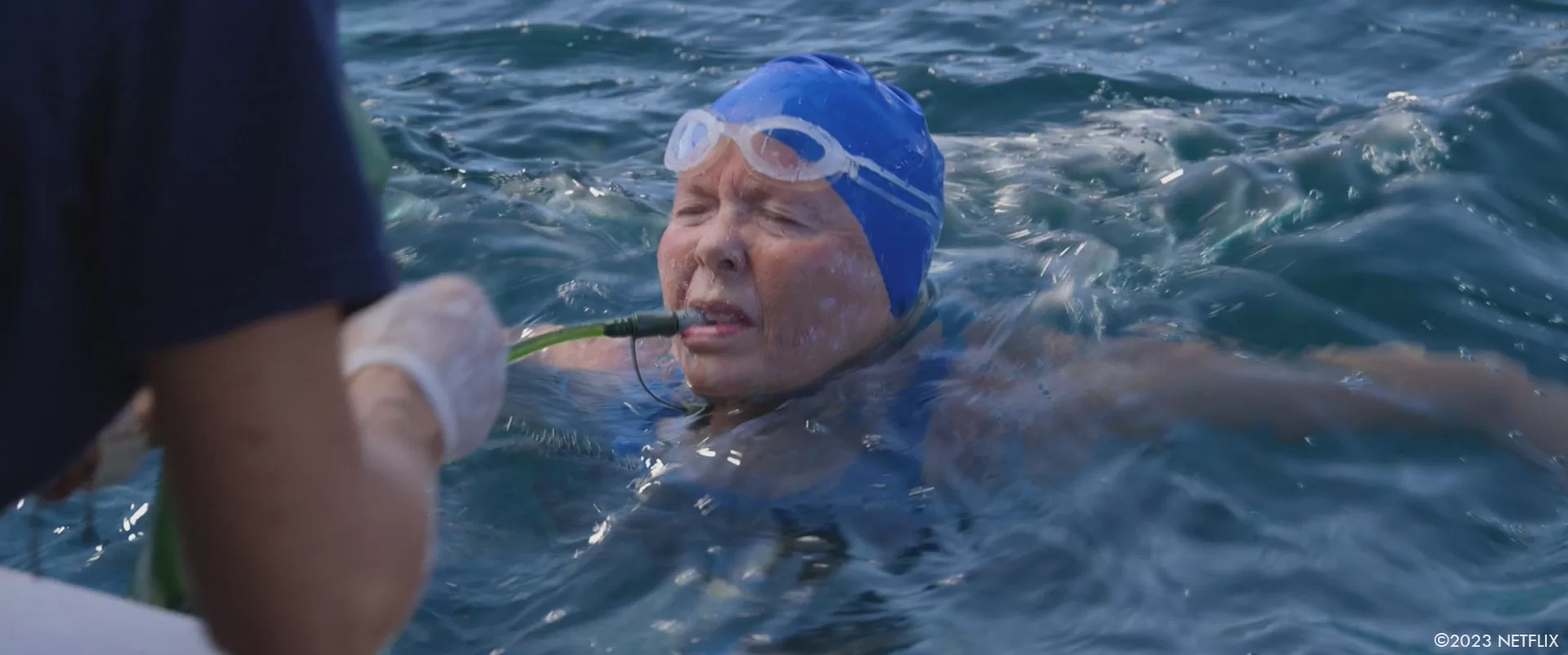
How did you recreate the Taj Mahal?
Listening to Diana talk about her real hallucination of the Taj Mahal, you get a sense of how delirious she must’ve been. Our goal for the hallucination was to have that same feeling— like a complete break from reality.
The plates were shot to give us a lot of options. Proof did some visualizations and from there we built the disjointed progression of her approach and swim around the Taj.
Can you tell us more about the environment work?
There wasn’t a ton of straight up environment work, most of it was mixed with the ocean work, such as Weta FX’s work on Key West and Scanline’s work on the Key West Beach
The sequence where Diana and Bonnie meet John Bartlett in St. Maarten was the one big environment build. Due to logistical issues, that scene was shot with a very small dock set in the main tank at Pinewood. We shot the BG plates in Hawaii based on a techvis that RISE did for us. RISE built out the environment and integrated their CG build of the dock. We also shot an aerial in Hawaii where we added the boat, and the crew to the CG dock.
They were kind of a sneaky tricky sequences that RISE did a great job with.
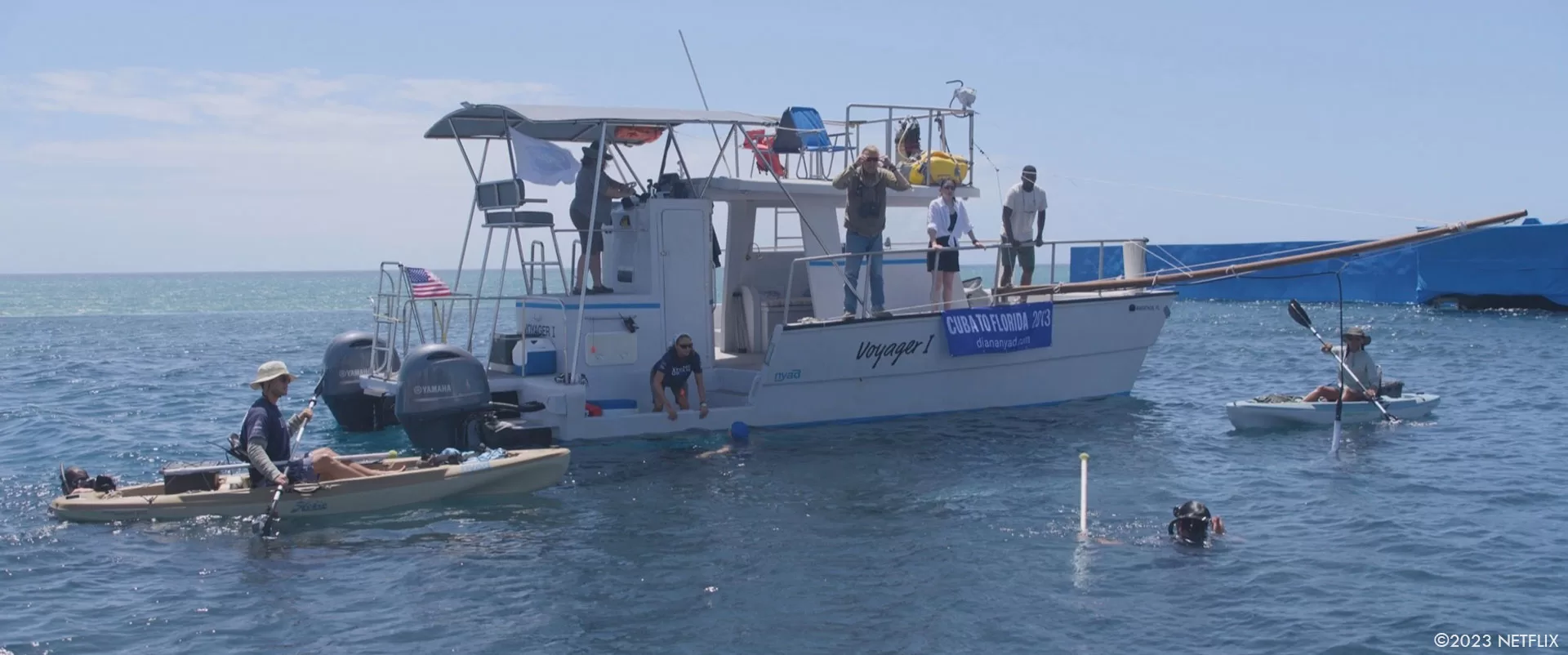
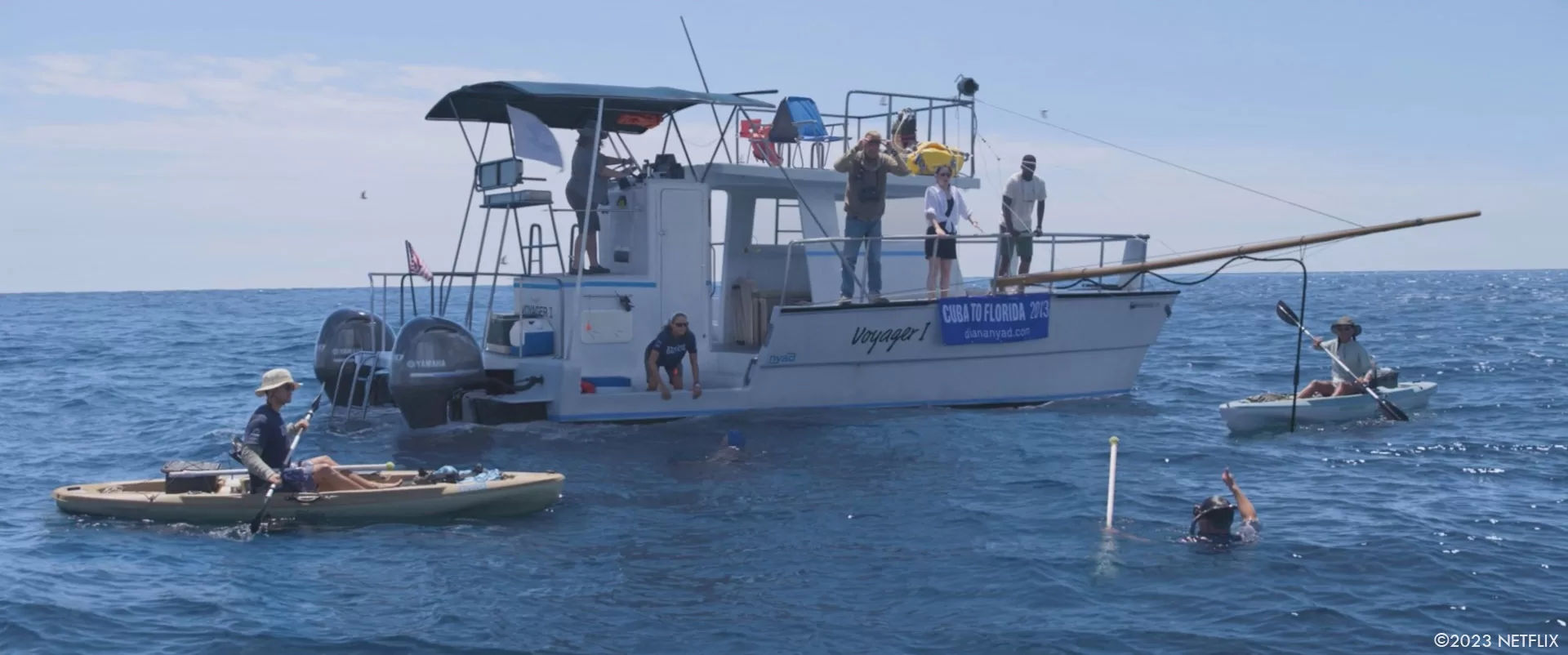
Which location was the most complicated to create?
The Ocean!
How did you incorporate the archival footage used in the film into your work?
It was amazing reference to have first and foremost. We were always very careful to balance what was happening in the movie with the archival. It was never meant to be 1:1, so we never attempted to match it.
Are there any invisible effects you would like to reveal?
Outside of the hallucinations, we hope most of the VFX pass the viewer by as they are taking in the movie. It’s rare to have a film come along with so much highly complex invisible effects work and the resources and support from the studio to achieve them. The whole VFX team got a real kick out of reading reviews of the movie that talked about how it must have been a “logistical nightmare” shooting in the open ocean with the cast.
…but one large task that has very much gone unnoticed so far is that there are a substantial number of shots where the boat was unnaturally static in the plate and we fully replaced the boat with a CG version to allow a 3D rocking and then put the actors back onto the boat.
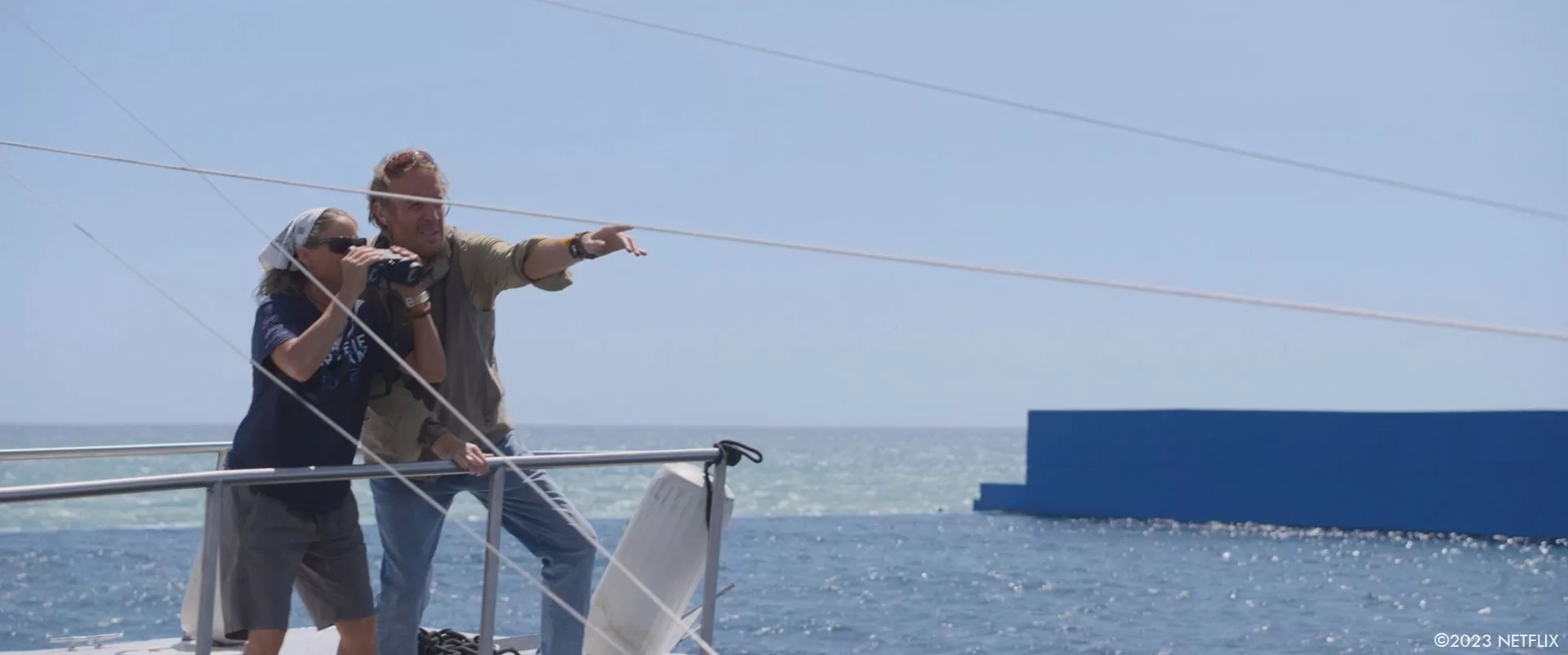
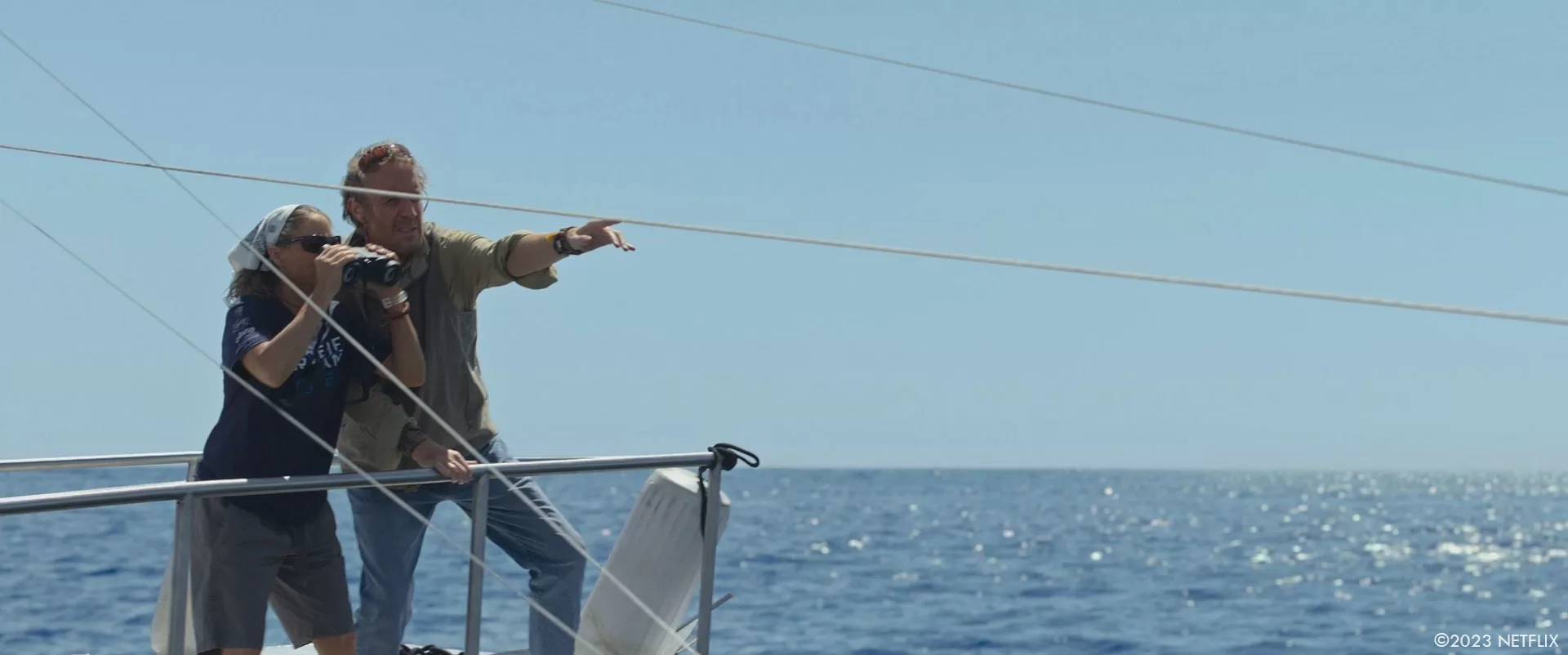
Which sequence or shot was the most challenging for you?
Any sequence where the water was pushing Diana around was a nail biter. Simply because there really was very little in the plate to keep and use, and our fear was that it could get a little uncanny on us. Pretty early on DNEG did a really great version of one of the shots of Diana by the boat. That shot became the bar that all the other shots had to rise to— which is one thing to say, but considering the many variables in each shot…not so easy to do.
What is your favorite shot or sequence?
I really love the scene at the end of the movie with Diana and Bonnie talking in the water. It was really an exercise in having very present and complex VFX but making it disappear, and having the audience feel the movement of the water, but not be distracted by it. I’ve watched that scene many times, and I am still blown away by the performances.
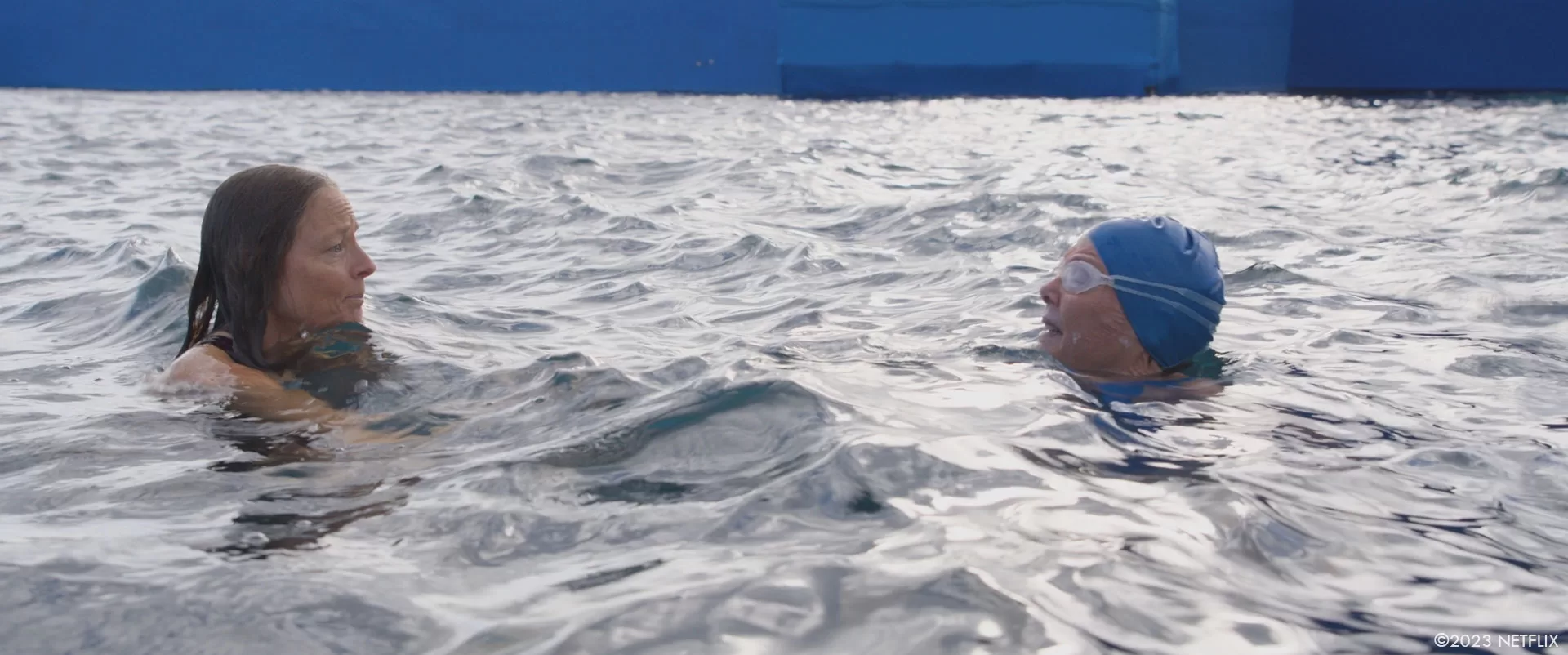
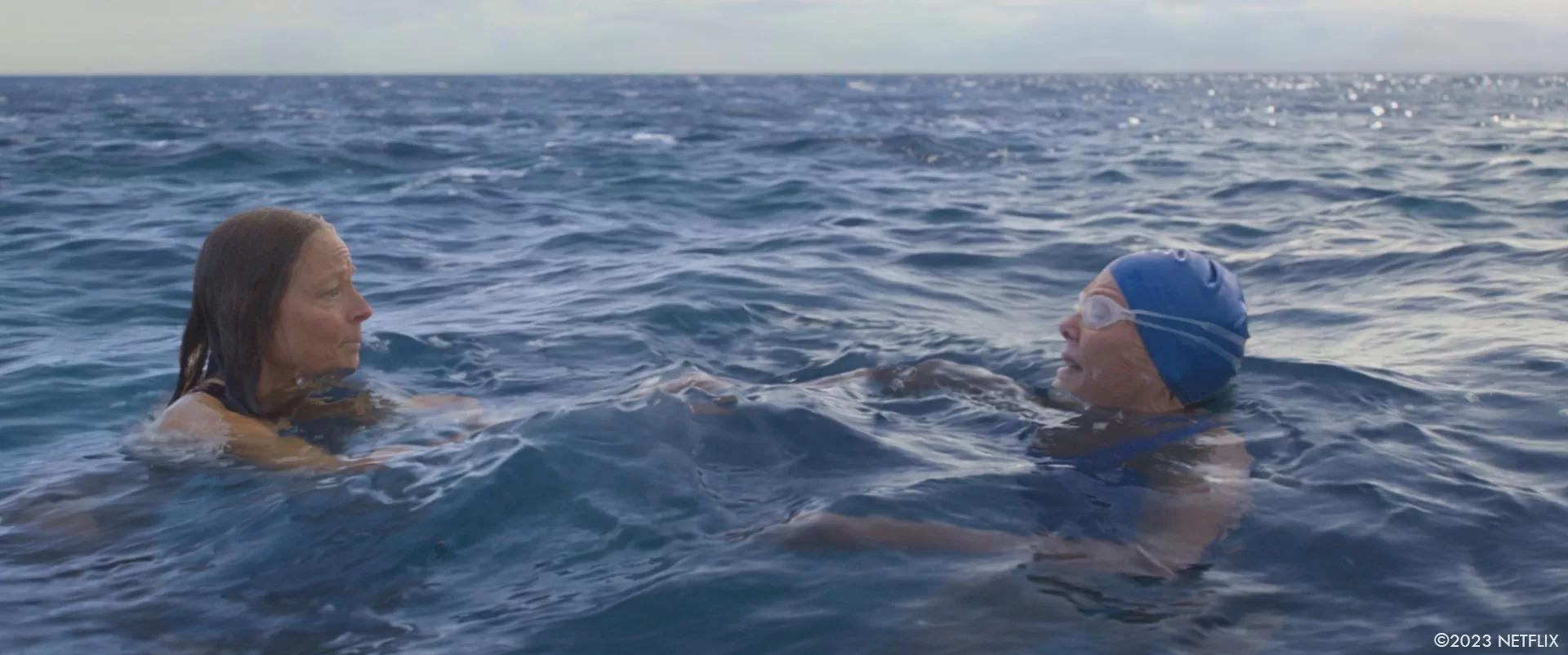
What is your best memory from working on this project?
This was a challenging movie on many levels, but our production side team really made it fun whenever they could, and always brought levity to the tough moments. As far as a specific memory…
I’ve never worked on a project that had rapturous applause before the movie ended during a preview screening. This was the first audience to see the movie and to have them react that way was pretty gratifying. Jimmy and Chai had never done a preview like that before and I remember them asking if that response was normal—and the whole team saying at once “No!”
The mix playback was also a real treat. After spending a year turning the tank into the ocean, it was a great experience to hear what the sound team was able to create.
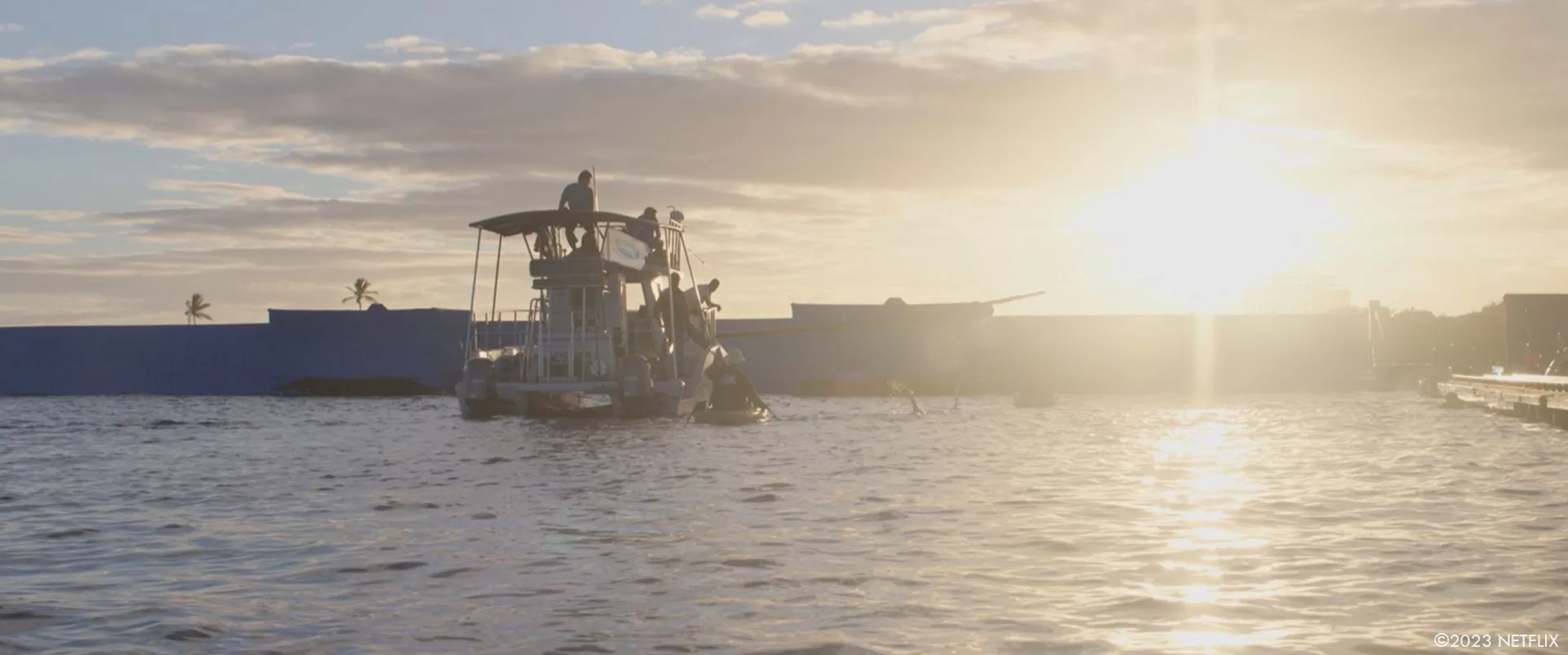
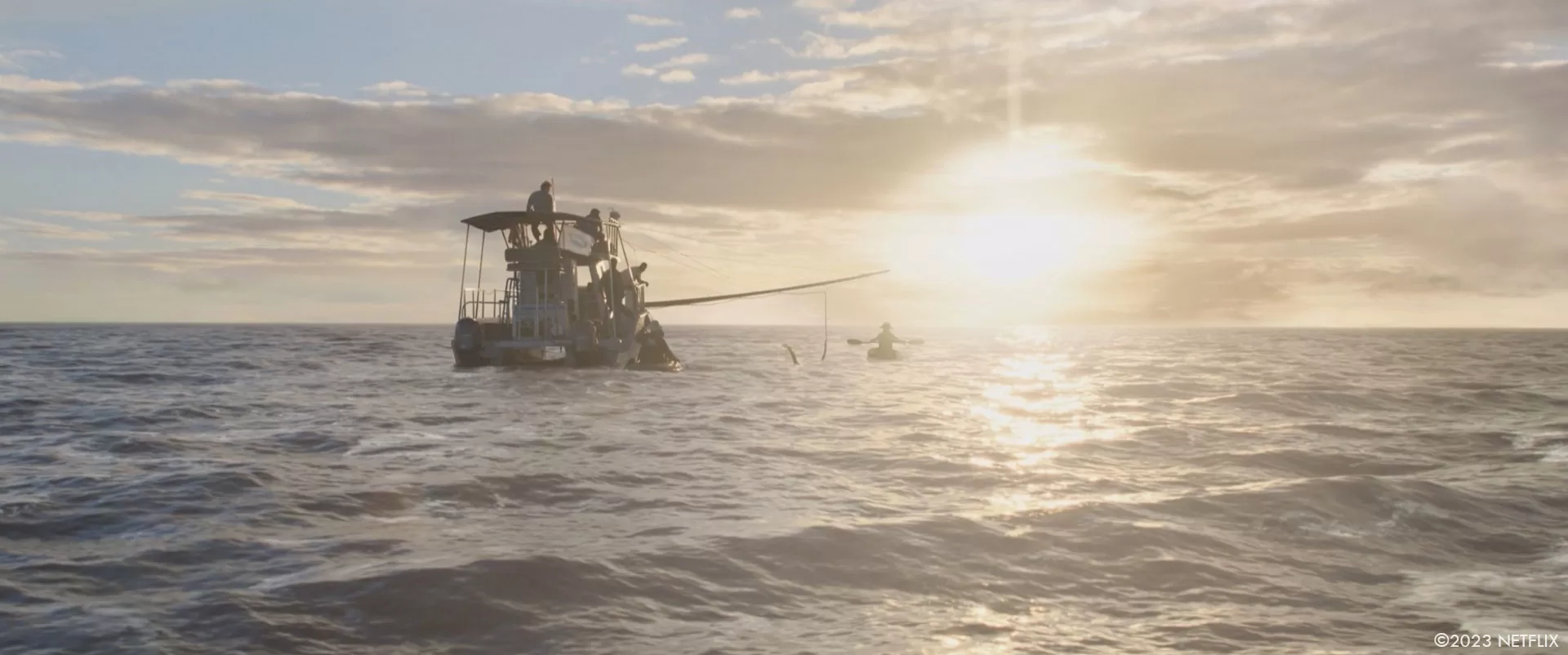
For long did you work on this project?
All said it was about 16 months
A big thanks for your time.
WANT TO KNOW MORE?
DNEG: Dedicated page about Nyad on DNEG website.
RISE: Dedicated page about Nyad on RISE website.
Weta FX: Dedicated page about Nyad on Weta FX website.
© Vincent Frei – The Art of VFX – 2023






